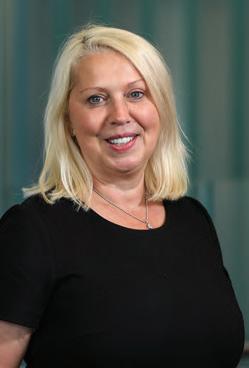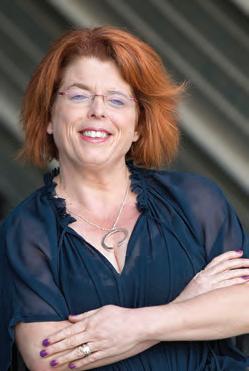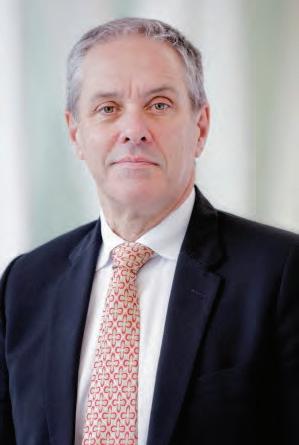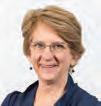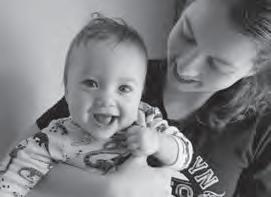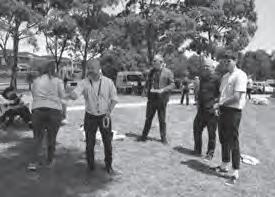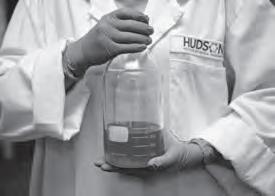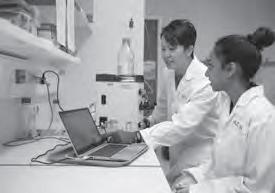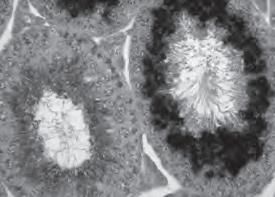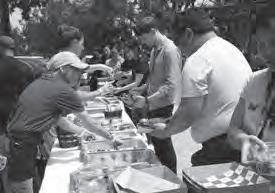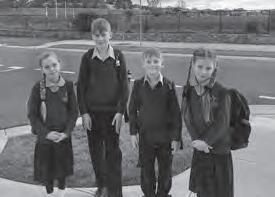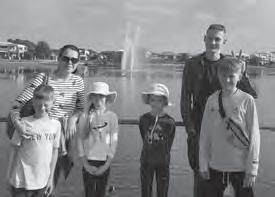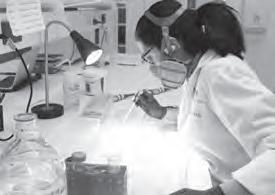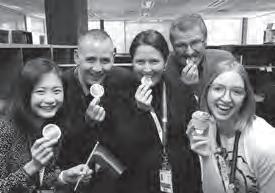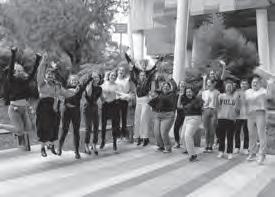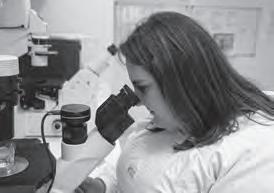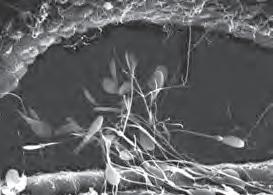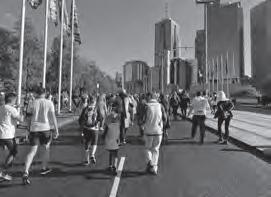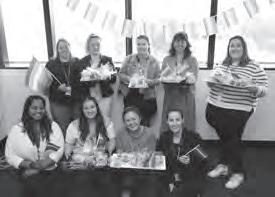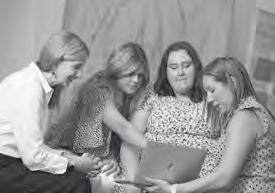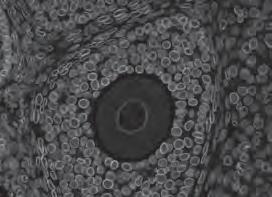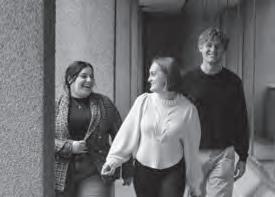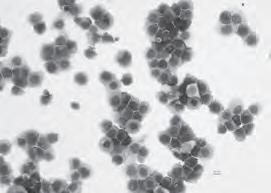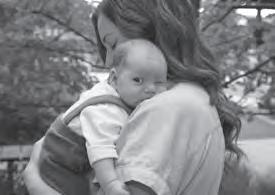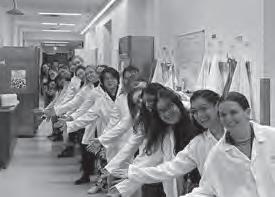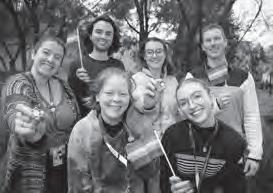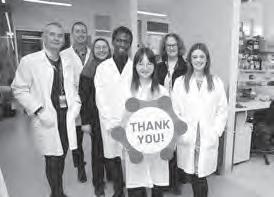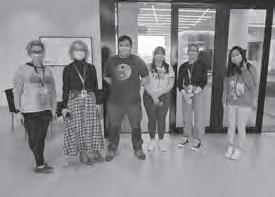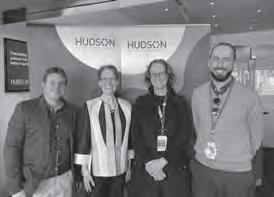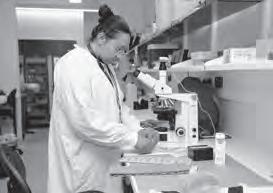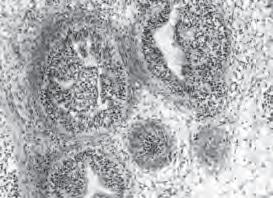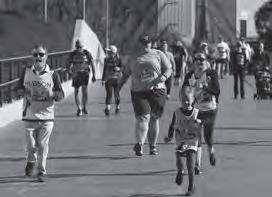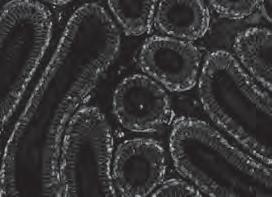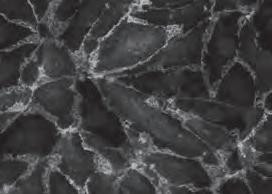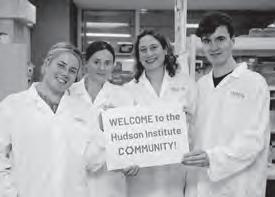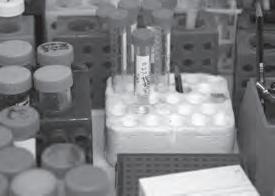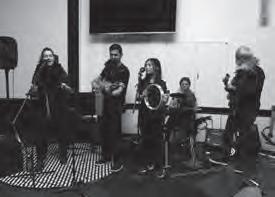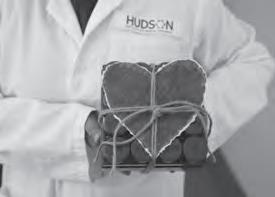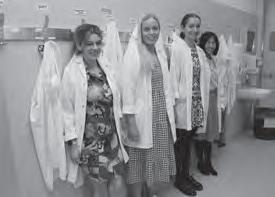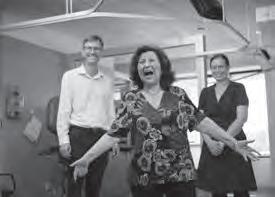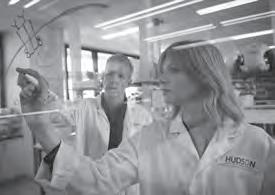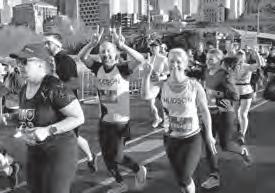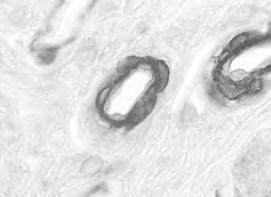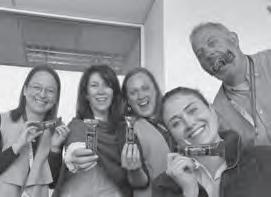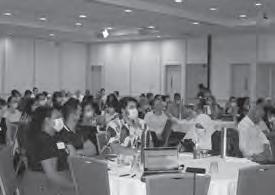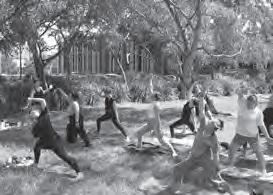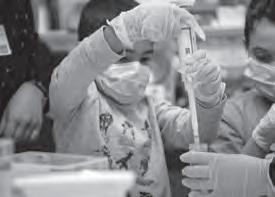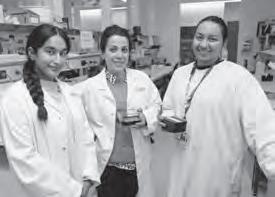2021 Publications
Journal Articles
1. Al-Asmari SS, Rajapakse A, Ullah TR, Pépin G, Croft LV, Gantier MP (2022) Pharmacological targeting of STING-dependent IL-6 production in cancer cells. Front Cell Dev Biol. 9:709618.
2. Aleksova J, Ebeling PR, Milat F, Elder GJ (2022) Dxa-derived advanced hip analysis and the trabecular bone score in end stage kidney disease secondary to type 1 diabetes. Eur J Endocrinol. 187:883-892.
3. Almasabi S, Boyd R, Ahmed AU, Williams BRG (2022) Integrin-linked kinase expression characterizes the immunosuppressive tumor microenvironment in colorectal cancer and regulates PD-L1 expression and immune cell cytotoxicity. Front Oncol. 12:836005.
4. Alperin M, Abramowitch S, Alarab M, Bortolini M, Brown B, Burnett LA, Connell KA, Damaser M, de Vita R, Gargett CE, Guess MK, Guler Z, Jorge RN, Kelley RS, Kibschull M, Miller K, Moalli PA, Mysorekar IU, Routzong MR, Shynlova O, Swenson CW, Therriault MA, Northington GM (2022) Foundational science and mechanistic insights for a shared disease model: An expert consensus: Developed by the AUGS Basic Science subcommittee and IUGA Special Interest Group. Int Urogynecol J. 33:1387-1392.
5. Andrew MS, Selvaratnam RJ, DaviesTuck M, Howland K, Davey MA (2022) The association between intrapartum interventions and immediate and ongoing breastfeeding outcomes: An Australian retrospective populationbased cohort study. Int Breastfeed J. 17:48.
6. Badurdeen S, Davis PG, Hooper SB, Donath S, Santomartino GA, Heng A, Zannino D, Hoq M, Omar FKC, Kane SC, Woodward A, Roberts CT, Polglase GR, Blank DA (2022) Physiologically based cord clamping for infants ≥32+0 weeks gestation: A randomised clinical trial and reference percentiles for heart rate and oxygen saturation for infants ≥35+0 weeks gestation. PLoS Med. 19:e1004029.
7. Badurdeen S, Hodgson KA, Santomartino GA, Stevens L, Donath S, Roberts CT, Manley BJ, Polglase GR, Hooper SB, Davis PG, Blank DA (2022) Rapid centralised randomisation in emergency setting trials using a smartphone. Eur J Pediatr. 181:3207-3210.
8. Bagheri-Fam S, Alankarage D, Frost ER, Harley VR (2022) Dataset of differentially expressed genes in mouse P12 testes in response to the loss of ATRX in Sertoli cells. Data in Brief. 42:108230.
9. Banakh I, Rahman MM, Arellano CL, Marks DC, Mukherjee S, Gargett CE, Cleland H, Akbarzadeh S (2022) Platelet lysate can support the development of a 3D-engineered skin for clinical application. Cell Tissue Res. 391:173-188.
10. Barber C, Yap Y, Hannan NJ, Wallace EM, Marshall SA (2022) Activin A causes endothelial dysfunction of mouse aorta and human aortic cells. Reproduction. 163:145-155.
11. Bardin PG, Bourke J (2022) Nurturing respiratory clinicianscientists - an important priority in the Asia-Pacific and for the Asia-Pacific Society of Respirology (APSR). Respirology. 27:490-492.
12. Bates D, Vivian D, Freitag J, Wickham J, Mitchell B, Verrills P, Shah K, Boyd R, Federman D, Barnard A, O’Connor L, Young JF (2022) Low-dose mesenchymal stem cell therapy for discogenic pain: Safety and efficacy results from a 1-year feasibility study. Future Sci OA. 8:FSO794.
13. Bekkering S, Singh K, Lu H, Limawan AP, Nold-Petry CA, Wallace MJ, Curtis N, Pepe S, Cheung M, Burgner DP, Moss T (2022) Neonatal subcutaneous BCG vaccination decreases atherosclerotic plaque number and plaque macrophage content in ApoE-/- mice. Biology (Basel). 11:1511.
14. Biniwale S, Wijayarathna R, Pleuger C, Bhushan S, Loveland KL, Meinhardt A, Hedger MP (2022)
Regulation of macrophage number and gene transcript levels by activin A and its binding protein, Follistatin, in the testes of adult mice. J Reprod Immunol. 151:103618.
15. Björndahl L, Barratt CLR, Mortimer D, Agarwal A, Aitken RJ, Alvarez JG, Aneck-Hahn N, Arver S, Baldi E, Bassas L, Boitrelle F, Bornman R, Carrell DT, Castilla JA, Cerezo Parra G, Check JH, Cuasnicu PS, Darney SP, de Jager C, De Jonge CJ, Drevet JR, Drobnis EZ, Du Plessis SS, Eisenberg ML, Esteves SC, Evgeni EA, Ferlin A, Garrido N, Giwercman A, Goovaerts IGF, Haugen TB, Henkel R, Henningsohn L, Hofmann MC, Hotaling JM, Jedrzejczak P, Jouannet P, Jørgensen N, Kirkman Brown JC, Krausz C, Kurpisz M, Kvist U, Lamb DJ, Levine H, Loveland KL, McLachlan RI, Mahran A, Maree L, Martins da Silva S, Mbizvo MT, Meinhardt A, Menkveld R, Mortimer ST, Moskovtsev S, Muller CH, Munuce MJ, Muratori M, Niederberger C, O’Flaherty C, Oliva R, Ombelet W, Pacey AA, Palladino MA, Ramasamy R, Ramos L, Rives N, Roldan ER, Rothmann S, Sakkas D, Salonia A, Sánchez-Pozo MC, Sapiro R, Schlatt S, Schlegel PN, Schuppe HC, Shah R, Skakkebæk NE, Teerds K, Toskin I, Tournaye H, Turek PJ, van der Horst G, Vazquez-Levin M, Wang C, Wetzels A, Zeginiadou T, Zini A (2022) Standards in semen examination: Publishing reproducible and reliable data based on high-quality methodology. Hum Reprod. 37:2497-2502.
16. Bourke NM, Achilles SL, Huang SU, Cumming HE, Lim SS, Papageorgiou I, Gearing LJ, Chapman R, Thakore S, Mangan NE, Mesiano S, Hertzog PJ (2022) Spatiotemporal regulation of human IFNε and innate immunity in the female reproductive tract. JCI Insight. 7:e135407.
17. Brouwer E, Knol R, Kroushev A, Van Den Akker T, Hooper SB, Roest AA, Te Pas AB (2022) Effect of breathing on venous return during delayed cord clamping: An observational study. Arch Dis Child Fetal Neonatal Ed. 107:65-69.
67 | HUDSON INSTITUTE OF MEDICAL RESEARCH
18. Brown GJ, Cañete PF, Wang H, Medhavy A, Bones J, Roco JA, He Y, Qin Y, Cappello J, Ellyard JI, Bassett K, Shen Q, Burgio G, Zhang Y, Turnbull C, Meng X, Wu P, Cho E, Miosge LA, Andrews TD, Field MA, Tvorogov D, Lopez AF, Babon JJ, López CA, Gónzalez-Murillo Á, Garulo DC, Pascual V, Levy T, Mallack EJ, Calame DG, Lotze T, Lupski JR, Ding H, Ullah TR, Walters GD, Koina ME, Cook MC, Shen N, de Lucas Collantes C, Corry B, Gantier MP, Athanasopoulos V, Vinuesa CG (2022) TLR7 gain-of-function genetic variation causes human lupus. Nature. 605:349-356.
19. Bujotzek A, Tiefenthaler G, Lariviere L, D’Andrea L, Marquez EA, Rudloff I, Cho SX, Deen NS, Richter W, Regenass-Lechner F, Poehler A, Whisstock JC, Sydow-Andersen J, Reiser X, Schuster S, Neubauer J, Hoepfl S, Richter K, Nold MF, NoldPetry CA, Schumacher F, Ellisdon AM (2022) Protein engineering of a stable and potent anti-inflammatory IL-37-FC fusion with enhanced therapeutic potential. Cell Chem Biol. 29:586-596.
20. Burgin H, Sharpe AJ, Nie S, Ziemann M, Crameri JJ, Stojanovski D, Pitt J, Ohtake A, Murayama K, McKenzie M (2022) Loss of mitochondrial fatty acid β-oxidation protein short-chain Enoyl-CoA hydratase disrupts oxidative phosphorylation protein complex stability and function. FEBS J. 290:225-246.
21. Burgin HJ, Crameri JJ, Stojanovski D, Sanchez M, Ziemann M, McKenzie M (2022) Stimulating mitochondrial biogenesis with deoxyribonucleosides increases functional capacity in ECHS1deficient cells. Int J Mol Sci. 23:12610.
22. Catford nSR, Halliday J, Lewis S, O’Bryan MK, Handelsman DJ, Hart RJ, McBain J, Rombauts L, Amor DJ, Saffery R, McLachlan RI (2022) The metabolic health of young men conceived using intracytoplasmic sperm injection. Hum Reprod. 37:2908-2920.
23. Catford SR, Halliday J, Lewis S, O’Bryan MK, Handelsman DJ, Hart RJ, McBain J, Rombauts L, Amor DJ, Saffery R, McLachlan RI (2022) Reproductive function in men conceived with in vitro fertilization and intracytoplasmic sperm injection. Fertil Steril. 117:727-737.
24. Chaichompoo P, Nithipongvanitch R, Kheansaard W, Tubsuwan A, Srinoun K, Vadolas J, Fucharoen S, Smith DR, Winichagoon P, Svasti S (2022) Increased autophagy leads to decreased apoptosis during β-thalassaemic mouse and patient erythropoiesis. Sci Rep. 12:18628.
25. Chan KY, Tran NT, Papagianis PC, Zahra VA, Nitsos I, Moxham AM, LaRosa DA, McDonald C, Miller SL, Galinsky R, Alahmari DM, Stojanovska V, Polglase GR (2022) Investigating pathways of ventilation induced brain injury on cerebral white matter inflammation and injury after 24 h in preterm lambs. Front Physiol. 13:904144.
26. Chauhan K, Schachna E, Libianto R, Ryan J, Hutton H, Fuller PJ, Wilson S, Kerr PG, Yang J (2022) Screening for primary aldosteronism is underutilised in patients with chronic kidney disease. J Nephrol. 35:1667-1677.
27. Chen Z, Liu X, Li F, Li C, MarquezLago T, Leier A, Webb GI, Xu D, Akutsu T, Song J (2022) Systematic characterization of lysine posttranslational modification sites using MUscADEL. Methods Mol Biol. 2499:205-219.
28. Choy KW, Fuller PJ, Russell G, Li Q, Leenaerts M, Yang J (2022) Primary aldosteronism. BMJ. 377:e065250.
29. Choy KW, Libianto R, Simpson I, Yang J (2022) Plasma aldosterone to renin ratio for the detection of primary aldosteronism in patients with drug-resistant hypertension. Med J Aust. 216:399-400.
30. Clyne CD, Kusnadi K, Cowcher A, Morgan J, Yang J, Fuller PJ, Young MJ (2022) Regulation of mineralocorticoid receptor activation by circadian protein TIMELESS. J Mol Endocrinol. 70:e210279.
31. Crinall K, Ward M, MacDonald R, Crinall W, Aridas J, Rolnik DL (2022) Evaluating a peer-led wellbeing programme for doctors-in-training during the COVID-19 pandemic in Victoria, Australia, using the most significant change technique. Eval J Australas. 12:e060575.
32. Curley M, Darbey A, O’Donnell L, Kilcoyne KR, Wilson K, Mungall W, Rebourcet D, Guo J, Mitchell RT, Smith LB (2022) Leukemia inhibitory factor-receptor signalling negatively regulates gonadotrophinstimulated testosterone production in mouse Leydig cells. Mol Cell Endocrinol. 544:111556.
33. Dankers W, Northcott M, Bennett T, D’Cruz A, Sherlock R, Gearing LJ, Hertzog P, Russ B, Miceli I, Scheer S, Fujishiro M, Hayakawa K, Ikeda K, Morand EF, Jones SA (2022) Type 1 interferon suppresses expression and glucocorticoid induction of glucocorticoid-induced leucine zipper (GILZ). Front Immunol. 13:1034880.
34. Dannappel MV, Zhu D, Sun X, Chua HK, Poppelaars M, Suehiro M, Khadka S, Lim Kam Sian TC, Sooraj D, Loi M, Gao H, Croagh D, Daly RJ, Faridi P, Boyer TG, Firestein R (2022) CDK8 and CDK19 regulate intestinal differentiation and homeostasis via the chromatin remodeling complex SWI/SNF. J Clin Invest. 132.
35. Davidson JO, van den Heuij LG, Dhillon SK, Miller SL, Lim R, Jenkin G, Gunn AJ, Bennet L (2022) Lack of neuroprotection with a single intravenous infusion of human amnion epithelial cells after severe hypoxia-ischemia in near-term fetal sheep. Int J Mol Sci. 23:8393.
36. Davidson S, Yu CH, Steiner A, Ebstein F, Baker PJ, JarurChamy V, Hrovat Schaale K, Laohamonthonkul P, Kong K, Calleja DJ, Harapas CR, Balka KR, Mitchell J, Jackson JT, Geoghegan ND, Moghaddas F, Rogers KL, Mayer-Barber KD, De Jesus AA, De Nardo D, Kile BT, Sadler AJ, Poli MC, Krüger E, Goldbach Mansky R, Masters SL (2022) Protein kinase R is an innate immune sensor of proteotoxic stress via accumulation of cytoplasmic IL-24. Sci Immunol. 7:eabi6763.
37. Dawson RE, Deswaerte V, West AC, Tang K, West AJ, Balic JJ, Gearing LJ, Saad MI, Yu L, Wu Y, Bhathal PS, Kumar B, Chakrabarti JT, Zavros Y, Oshima H, Klinman DM, Oshima M, Tan P, Jenkins BJ (2022) STAT3mediated upregulation of the AIM2 DNA sensor links innate immunity with cell migration to promote epithelial tumourigenesis. Gut 71:1515-1531.
HUDSON INSTITUTE OF MEDICAL RESEARCH 68
38. de Alwis N, Binder NK, Beard S, Mangwiro YT, Kadife E, Cuffe JS, Keenan E, Fato BR, Kaitu’u-Lino TJ, Brownfoot FC, Marshall SA, Hannan NJ (2022) The L-NAME mouse model of preeclampsia and impact to long-term maternal cardiovascular health. Life Sci Alliance. 5:e202201517.
39. de Vasconcelos DAA, Nachbar RT, Pinheiro CH, do Amaral CL, Crisma AR, Vitzel KF, Abreu P, Alonso-Vale MI, Lopes AB, Bento-Santos A, Falcão-Tebas F, de Santana DF, do Nascimento E, Curi R, Pithon-Curi TC, Hirabara SM, Leandro CG (2022) Maternal low-protein diet reduces skeletal muscle protein synthesis and mass via Akt-mTOR pathway in adult rats. Front Nutr. 9:947458.
40. Delahunty R, Nguyen L, Craig S, Creighton B, Ariyaratne D, Garsed DW, Christie E, Fereday S, Andrews L, Lewis A, Limb S, Pandey A, Hendley J, Traficante N, Carvajal N, Spurdle AB, Thompson B, Parsons MT, Beshay V, Volcheck M, Semple T, Lupat R, Doig K, Yu J, Chen XQ, Marsh A, Love C, Bilic S, Beilin M, Nichols CB, Greer C, Lee YC, Gerty S, Gill L, Newton E, Howard J, Williams R, Norris C, Stephens AN, Tutty E, Smyth C, O’Connell S, Jobling T, Stewart CJR, Tan A, Fox SB, Pachter N, Li J, Ellul J, Mir Arnau G, Young MA, Gordon L, Forrest L, Harris M, Livingstone K, Hill J, Chenevix-Trench G, Cohen PA, Webb PM, Friedlander M, James P, Bowtell D, Alsop K (2022) TRACEBACK: Testing of historical tubo-ovarian cancer patients for hereditary risk genes as a cancer prevention strategy in family members. J Clin Oncol. 40:20362047.
41. Dudink I, White TA, Ardalan M, Mallard C, Ballerin G, Creed SJ, Pham Y, Sutherland AE, CastilloMelendez M, Allison BJ, Miller SL (2022) An optimized and detailed step-by-step protocol for the analysis of neuronal morphology in Golgi-stained fetal sheep brain. Dev Neurosci. 44:344-362.
42. Engel RM, Jardé T, Oliva K, Kerr G, Chan WH, Hlavca S, Nickless D, Archer SK, Yap R, Ranchod P, Bell S, Niap A, Koulis C, Chong A, Wilkins S, Dale TC, Hollins AJ, McMurrick PJ, Abud HE (2022) Modelling colorectal cancer: A bio-resource of 50 patient-derived organoid lines. J Gastroenterol Hepatol. 37:898-907.
43. Escalona RM, Chu S, Kadife E, Kelly JK, Kannourakis G, Findlay JK, Ahmed N (2022) Knock down of TIMP-2 by siRNA and CRISPR/ Cas9 mediates diverse cellular reprogramming of metastasis and chemosensitivity in ovarian cancer. Cancer Cell Int. 22:422.
44. Escalona RM, Kannourakis G, Findlay JK, Ahmed N (2022). Expression of TIMPs and MMPs in ovarian tumors, ascites, ascites-derived cells, and cancer cell lines: Characteristic modulatory response before and after chemotherapy treatment. Frontiers in Oncology 11:796588.
45. Farsi F, Tahvilian N, Heydarian A, Karimi S, Ebrahimi S, EbrahimiDaryani N, Tabataba-Vakili S, Heshmati J, Mokhtare M (2022) Evaluating macro- and micronutrients and food groups intake with the risk of developing inflammatory bowel disease: Is there any association? Food Sci Nutr. 10:3920-3930.
46. Fatmous M, Rai A, Poh QH, Salamonsen LA, Greening DW (2022) Endometrial small extracellular vesicles regulate human trophectodermal cell invasion by reprogramming the phosphoproteome landscape. Front Cell Dev Biol. 10:1078096.
47. Forster SC, Clare S, Beresford-Jones BS, Harcourt K, Notley G, Stares MD, Kumar N, Soderholm AT, Adoum A, Wong H, Morón B, Brandt C, Dougan G, Adams DJ, Maloy KJ, Pedicord VA, Lawley TD (2022) Identification of gut microbial species linked with disease variability in a widely used mouse model of colitis. Nat Microbiol. 7:590-599.
48. Forster SC, Liu J, Kumar N, Gulliver EL, Gould JA, Escobar-Zepeda A, Mkandawire T, Pike LJ, Shao Y, Stares MD, Browne HP, Neville BA, Lawley TD (2022) Strain-level characterization of broad host range mobile genetic elements transferring antibiotic resistance from the human microbiome. Nat Commun. 13:1445.
49. Frank D, Garnish SE, Sandow JJ, Weir A, Liu L, Clayer E, Meza L, Rashidi M, Cobbold SA, Scutts SR, Doerflinger M, Anderton H, Lawlor KE, Lalaoui N, Kueh AJ, Eng VV, Ambrose RL, Herold MJ, Samson AL, Feltham R, Murphy JM, Ebert G, Pearson JS, Vince JE (2022)
Ubiquitylation of RIPK3 beyondthe-RHIM can limit RIPK3 activity and cell death. iScience. 25:104632.
50. Fukusho R, Ruane L, Phyland D, Koh J, Avram A, Leong P, MacDonald M, Lau KK, Baxter M, Bardin PG (2022) A multidisciplinary team clinic for vocal cord dysfunction reduces corticosteroid burst therapy. J Allergy Clin Immunol Pract. 10:612-614.
51. Funder, J (2022) Primary aldosteronism. Trends in Cardiovascular Medicine 32:228-233.
52. Gaertner VD, Rüegger CM, Bassler D, O’Currain E, Kamlin COF, Hooper SB, Davis PG, Springer L (2022) Effects of tactile stimulation on spontaneous breathing during face mask ventilation. Arch Dis Child Fetal Neonatal Ed. 107:508-512.
53. Gaertner VD, Waldmann AD, Bassler D, Hooper SB, Rüegger CM (2022) Intrapulmonary volume changes during hiccups versus spontaneous breaths in a preterm infant. Neonatology. 119:525-529.
54. Gantier MP (2022). Powering on cGAMP mini factories. EMBO Rep 23:e54231.
55. Gargett CE, Hapangama D (2022) Endometrial Stem/Progenitor Cells: Prospects and Challenges. J Pers Med 12:1466
56. Gorsek Sparovec T, Markert UR, Reif P, Schoell W, Moser G, Feichtinger J, Mihalic ZN, Kargl J, Gargett CE, Gold D (2022) The fate of human SUSD2+ endometrial mesenchymal stem cells during decidualization. Stem Cell Res. 60:102671.
57. Green EA, Metz D, Galinsky R, Atkinson R, Skuza EM, Clark M, Gunn AJ, Kirkpatrick CM, Hunt RW, Berger PJ, Nold-Petry CA, Nold MF (2022) Anakinra pilot - a clinical trial to demonstrate safety, feasibility and pharmacokinetics of interleukin 1 receptor antagonist in preterm infants. Front Immunol. 13:1022104.
58. Gulliver EL, Sy BM, Wong JL, Deveson Lucas DS, Powell DR, Harper M, Tree JJ, Boyce JD (2022) The role and targets of the RNA-binding protein ProQ in the gram-negative bacterial pathogen Pasteurella multocida. J Bacteriol. 204:e0059221.
59. Gurner KH, Evans J, Hutchison JC, Harvey AJ, Gardner DK (2022) A microenvironment of high lactate and low pH created by the blastocyst promotes endometrial receptivity and implantation. Reprod Biomed Online. 44:14-26.
69 | HUDSON INSTITUTE OF MEDICAL RESEARCH
60. Hajmir MM, Shiraseb F, Ebrahimi S, Noori S, Ghaffarian-Ensaf R, Mirzaei K (2022) Interaction between ultra-processed food intake and genetic risk score on mental health and sleep quality. Eat Weight Disord. 27:3609-3625.
61. Hammarberg, K., et al. (2022). “Does being conceived by assisted reproductive technology influence adult quality of life?”. Hum Fertil (Camb). 1-7
62. Han-Menz C, Whiteley G, Evans R, Razak A, Malhotra A (2022) Systemic postnatal corticosteroids and magnetic resonance imaging measurements of corpus callosum and cerebellum of extremely preterm infants. J Paediatr Child Health. 59:282-287.
63. Headland SE, Dengler HS, Xu D, Teng G, Everett C, Ratsimandresy RA, Yan D, Kang J, Ganeshan K, Nazarova EV, Gierke S, Wedeles CJ, Guidi R, DePianto DJ, Morshead KB, Huynh A, Mills J, Flanagan S, Hambro S, Nunez V, Klementowicz JE, Shi Y, Wang J, Bevers J, 3rd, Ramirez-Carrozzi V, Pappu R, Abbas A, Vander Heiden J, Choy DF, Yadav R, Modrusan Z, Panettieri RA, Jr., Koziol-White C, Jester WF, Jr., Jenkins BJ, Cao Y, Clarke C, Austin C, Lafkas D, Xu M, Wolters PJ, Arron JR, West NR, Wilson MS (2022) Oncostatin M expression induced by bacterial triggers drives airway inflammatory and mucus secretion in severe asthma. Sci Transl Med. 14:eabf8188.
64. Heazlewood SY, Ahmad T, Mohenska M, Guo BB, Gangatirkar P, Josefsson EC, Ellis SL, Ratnadiwakara M, Cao H, Cao B, Heazlewood CK, Williams B, Fulton M, White JF, Ramialison M, Nilsson SK, Änkö ML (2022) The RNA-binding protein SRSF3 has an essential role in megakaryocyte maturation and platelet production. Blood. 139:1359-1373.
65. Hodgson KA, Owen LS, Kamlin COF, Roberts CT, Newman SE, Francis KL, Donath SM, Davis PG, Manley BJ (2022) Nasal high-flow therapy during neonatal endotracheal intubation. N Engl J Med. 386:16271637.
66. Horn-Oudshoorn EJJ, Knol R, Cochius-den Otter SCM, Te Pas AB, Hooper SB, Roberts CT, Rafat N, Schaible T, de Boode WP, van der Lee R, Debeer A, Kipfmueller F, Roehr CC, Reiss IKM, DeKoninck PLJ (2022) Spontaneous breathing approach in mild congenital diaphragmatic hernia: A resuscitation algorithm. Front Pediatr. 10:945090.
67. Horn-Oudshoorn EJJ, Knol R, Te Pas AB, Hooper SB, Cochius-den Otter SCM, Wijnen RMH, Crossley KJ, Rafat N, Schaible T, de Boode WP, Debeer A, Urlesberger B, Roberts CT, Kipfmueller F, Reiss IKM, DeKoninck PLJ (2022) Physiological-based cord clamping versus immediate cord clamping for infants born with a congenital diaphragmatic hernia (PinC): Study protocol for a multicentre, randomised controlled trial. BMJ Open. 12:e054808.
68. Horn-Oudshoorn EJJ, Vermeulen MJ, Crossley KJ, Cochius-den Otter SCM, Schnater JM, Reiss IKM, DeKoninck PLJ (2022) Oxygen saturation index in neonates with a congenital diaphragmatic hernia: A retrospective cohort study. Neonatology. 119:111-118.
69. Hosseini S, Moody SC, Fietz D, Indumathy S, Schuppe HC, Hedger MP, Loveland KL (2022) The changing landscape of immune cells in the fetal mouse testis. Histochem Cell Biol. 158:345-368.
70. Hu J, Chen X, Yang J, Giovannucci E, Lee DH, Luo W, Cheng Q, Gong L, Wang Z, Li Q, Yang S (2022) Association between fat mass and mortality: Analysis of Mendelian randomization and lifestyle modification. Metabolism 136:155307.
71. Inocencio IM, Tran NT, Nakamura S, Khor SJ, Wiersma M, Stoecker K, Maksimenko A, Polglase GR, Walker DW, Pearson JT, Wong FY (2022) Cerebral haemodynamic response to somatosensory stimulation in preterm lambs and 7-10-day old lambs born at term: Direct synchrotron microangiography assessment. J Cereb Blood Flow Metab. 271678x211045848.
72. Inocencio IM, Tran NT, Wiersma M, Stoecker K, Nakamura S, Moss TJ, Walker DW, Wong FY (2022) The cerebral haemodynamic response to somatosensory stimulation in preterm newborn lambs is reduced following intrauterine inflammation and dopamine infusion. Exp Neurol. 352:114049.
73. Jarred EG, Qu Z, Tsai T, Oberin R, Petautschnig S, Bildsoe H, Pederson S, Zhang QH, Stringer JM, Carroll J, Gardner DK, Van den Buuse M, Sims NA, Gibson WT, Adelson DL, Western PS (2022) Transient Polycomb activity represses developmental genes in growing oocytes. Clin Epigenetics. 14:183.
74. Jia T, Chang WS, Marcelino VR, Zhao S, Liu X, You Y, Holmes EC, Shi M, Zhang C (2022) Characterization of the gut microbiome and resistomes of wild and zoo-captive macaques. Front Vet Sci. 8:778556.
75. Jing Y, Hu J, Luo R, Mao Y, Luo Z, Zhang M, Yang J, Song Y, Feng Z, Wang Z, Cheng Q, Ma L, Yang Y, Zhong L, Du Z, Wang Y, Luo T, He W, Sun Y, Lv F, Li Q, Yang S (2022) Prevalence and characteristics of adrenal tumors in an unselected screening population: A crosssectional study. Ann Intern Med. 175:1383-1391.
76. Johansen MD, Mahbub RM, Idrees S, Nguyen DH, Miemczyk S, Pathinayake P, Nichol K, Hansbro NG, Gearing LJ, Hertzog PJ, Gallego-Ortega D, Britton WJ, Saunders BM, Wark PA, Faiz A, Hansbro PM (2022) Increased SARS-CoV-2 infection, protease and inflammatory responses in COPD primary bronchial epithelial cells defined with single cell RNAsequencing. Am J Respir Crit Care Med. 206:712-729.
77. Jones AR, Ebeling PR, Teede H, Milat F, Vincent AJ (2022) Patient experience of telemedicine for osteoporosis care during the COVID-19 pandemic. Clin Endocrinol (Oxf). 98:134-135.
78. Joyeux L, Basurto D, Bleeser T, Van der Veeken L, Vergote S, Kunpalin Y, Trigo L, Corno E, De Bie FR, De Coppi P, Ourselin S, Van Calenbergh F, Hooper SB, Rex S, Deprest J (2022) Fetoscopic insufflation of heated-humidified carbon dioxide during simulated spina bifida repair is safe under controlled anesthesia in the fetal lamb. Prenat Diagn. 42:180-191.
HUDSON INSTITUTE OF MEDICAL RESEARCH | 70
79. Kagan BJ, Kitchen AC, Tran NT, Habibollahi F, Khajehnejad M, Parker BJ, Bhat A, Rollo B, Razi A, Friston KJ (2022) In vitro neurons learn and exhibit sentience when embodied in a simulated gameworld. Neuron. 110:3952-3969.
80. Keung C, Heraud P, Kuk N, Lim R, Sievert W, Moore G, Wood B (2022) Fourier-transform infra-red microspectroscopy can accurately diagnose colitis and assess severity of inflammation. Int J Mol Sci. 23.
81. Knol R, Brouwer E, van den Akker T, DeKoninck PLJ, Lopriore E, Onland W, Vermeulen MJ, van den Akkervan Marle ME, van Bodegom-Vos L, de Boode WP, van Kaam AH, Reiss IKM, Polglase GR, Hutten GJ, Prins SA, Mulder EEM, Hulzebos CV, van Sambeeck SJ, van der Putten ME, Zonnenberg IA, Hooper SB, Te Pas AB (2022) Physiological-based cord clamping in very preterm infants: The aeration, breathing, clamping 3 (ABC3) trial-study protocol for a multicentre randomised controlled trial. Trials. 23:838.
82. Kusuma GD, Li A, Zhu D, McDonald H, Inocencio IM, Chambers DC, Sinclair K, Fang H, Greening DW, Frith JE, Lim R (2022) Effect of 2D and 3D culture microenvironments on mesenchymal stem cell-derived extracellular vesicles potencies. Front Cell Dev Biol. 10:819726.
83. Kuypers K, Willemsen LA, Cramer SJE, Kashyap AJ, Drevhammar T, Hooper SB, Te Pas AB (2022) The effect of a higher bias gas flow on imposed T-piece resistance and breathing in preterm infants at birth. Front Pediatr. 10:817010.
84. La HM, Liao J, Legrand JMD, Rossello FJ, Chan AL, Vaghjiani V, Cain JE, Papa A, Lee TL, Hobbs RM (2022) Distinctive molecular features of regenerative stem cells in the damaged male germline. Nat Commun. 13:2500.
85. Lao JC, Bui CB, Pang MA, Cho SX, Rudloff I, Elgass K, Schröder J, Maksimenko A, Mangan NE, Starkey MR, Skuza EM, Sun YBY, Beker F, Collins CL, Kamlin OF, König K, Malhotra A, Tan K, Theda C, Young MJ, McLean CA, Wilson NJ, Sehgal A, Hansbro PM, Pearson JT, Polo JM, Veldman A, Berger PJ, NoldPetry CA, Nold MF (2022) Type 2 immune polarization is associated with cardiopulmonary disease in preterm infants. Sci Transl Med. 14:eaaz8454.
86. Lei D, Miller T, Carr J, Buttery J, Nold-Petry CA, Nold MF, Malhotra A (2022) Timing of the first dose of the Hepatitis B vaccine in preterm infants. Vaccines. 10.
87. Leung D, Price ZK, Lokman NA, Wang W, Goonetilleke L, Kadife E, Oehler MK, Ricciardelli C, Kannourakis G, Ahmed N (2022) Platinum-resistance in epithelial ovarian cancer: An interplay of epithelial-mesenchymal transition interlinked with reprogrammed metabolism. J Transl Med. 20:556.
88. Li A, Barabadi M, McDonald H, Chan ST, Krause M, Ooi JD, Kusuma GD, James D, Lim R (2022) Improving cell viability using counterflow centrifugal elutriation. Cytotherapy 24:650-658.
89. Libianto RS, Russell GM, Stowasser M, Gwini SM, Nuttall P, Shen J, Young MJ, Fuller PJ, Yang J (2022) Detecting primary aldosteronism in Australian primary care: A prospective study. Med J Aust. 216:408-412.
90. Lilly JV, Rokita JL, Mason JL, Patton T, Stefankiewiz S, Higgins D, Trooskin G, Larouci CA, Arya K, Appert E, Heath AP, Zhu Y, Brown MA, Zhang B, Farrow BK, Robins S, Morgan AM, Nguyen TQ, Frenkel E, Lehmann K, Drake E, Sullivan C, Plisiewicz A, Coleman N, Patterson L, Koptyra M, Helili Z, Van Kuren N, Young N, Kim MC, Friedman C, Lubneuski A, Blackden C, Williams M, Baubet V, Tauhid L, Galanaugh J, Boucher K, Ijaz H, Cole KA, Choudhari N, Santi M, Moulder RW, Waller J, Rife W, Diskin SJ, Mateos M, Parsons DW, Pollack IF, Goldman S, Leary S, Caporalini C, Buccoliero AM, Scagnet M, Haussler D, Hanson D, Firestein R, Cain J, Phillips JJ, Gupta N, Mueller S, Grant G, Monje-Deisseroth M, Partap S, Greenfield JP, Hashizume R, Smith A, Zhu S, Johnston JM, Fangusaro JR, Miller M, Wood MD, Gardner S, Carter CL, Prolo LM, Pisapia J, Pehlivan K, Franson A, Niazi T, Rubin J, Abdelbaki M, Ziegler DS, Lindsay HB, Stucklin AG, Gerber N, Vaske OM, Quinsey C, Rood BR, Nazarian J, Raabe E, Jackson EM, Stapleton S, Lober RM, Kram DE, Koschmann C, Storm PB, Lulla RR, Prados M, Resnick AC, Waanders AJ (2022) The children’s brain tumor network (CBTN) - accelerating research in pediatric central nervous system tumors through collaboration and open science. Neoplasia. 35:100846.
91. Liu L, Sandow JJ, Leslie Pedrioli DM, Samson AL, Silke N, Kratina T, Ambrose RL, Doerflinger M, Hu Z, Morrish E, Chau D, Kueh AJ, Fitzibbon C, Pellegrini M, Pearson JS, Hottiger MO, Webb AI, Lalaoui N, Silke J (2022) Tankyrasemediated ADP-ribosylation is a regulator of TNF-induced death. Sci Adv. 8:eabh2332.
92. Lundy J, McKay O, Croagh D, Ganju V (2022) Exceptional response to olaparib and pembrolizumab for pancreatic adenocarcinoma with germline brca1 mutation and high tumor mutation burden: Case report and literature review. JCO Precis Oncol. 6:e2100437.
93. Magawa S, Lear CA, Beacom MJ, King VJ, Kasai M, Galinsky R, Ikeda T, Gunn AJ, Bennet L (2022) Fetal heart rate variability is a biomarker of rapid but not progressive exacerbation of inflammation in preterm fetal sheep. Sci Rep. 12:1771.
94. 94. Manley BJ, Buckmaster AG, Travadi J, Owen LS, Roberts CT, Wright IMR, Davis PG, Arnolda G (2022) Trends in the use of noninvasive respiratory support for term infants in tertiary neonatal units in Australia and New Zealand. Arch Dis Child Fetal Neonatal Ed. 107:572-576.
95. Martherus T, Croughan MK, Crossley KJ, Wallace MJ, McGillick EV, Thio M, Roehr CC, Pearson JT, Lee K, Ruben G, Kitchen MJ, Te Pas AB, Hooper SB (2022) Higher CPAP levels improve functional residual capacity at birth in preterm rabbits. Pediatr Res. 91:1686-1694.
96. Martin JH, Mohammed R, Delforce SJ, Skerrett-Byrne DA, de Meaultsart CC, Almazi JG, Stephens AN, Verrills NM, Dimitriadis E, Wang Y, Lumbers ER, Pringle KG (2022) Role of the prorenin receptor in endometrial cancer cell growth. Oncotarget. 13:587-599.
97. McKenna J, Bellofiore N, TempleSmith P (2022) Good things come to those who mate: Analysis of the mating behaviour in the menstruating rodent, Acomys cahirinus. BMC Zoology. 7:13.
98. Menkhorst E, Zhou W, Santos L, Zhang JG, St-Pierre Y, Young MJ, Dimitriadis E (2022) Galectin-7 dysregulates reninangiotensin-aldosterone and NADPH oxide synthase pathways in preeclampsia. Pregnancy Hypertens. 30:130-136.
71 | HUDSON INSTITUTE OF MEDICAL RESEARCH
99. Meyer F, Fritz A, Deng ZL, Koslicki D, Lesker TR, Gurevich A, Robertson G, Alser M, Antipov D, Beghini F, Bertrand D, Brito JJ, Brown CT, Buchmann J, Buluç A, Chen B, Chikhi R, Clausen P, Cristian A, Dabrowski PW, Darling AE, Egan R, Eskin E, Georganas E, Goltsman E, Gray MA, Hansen LH, Hofmeyr S, Huang P, Irber L, Jia H, Jørgensen TS, Kieser SD, Klemetsen T, Kola A, Kolmogorov M, Korobeynikov A, Kwan J, LaPierre N, Lemaitre C, Li C, Limasset A, Malcher-Miranda F, Mangul S, Marcelino VR, Marchet C, Marijon P, Meleshko D, Mende DR, Milanese A, Nagarajan N, Nissen J, Nurk S, Oliker L, Paoli L, Peterlongo P, Piro VC, Porter JS, Rasmussen S, Rees ER, Reinert K, Renard B, Robertsen EM, Rosen GL, Ruscheweyh HJ, Sarwal V, Segata N, Seiler E, Shi L, Sun F, Sunagawa S, Sørensen SJ, Thomas A, Tong C, Trajkovski M, Tremblay J, Uritskiy G, Vicedomini R, Wang Z, Wang Z, Wang Z, Warren A, Willassen NP, Yelick K, You R, Zeller G, Zhao Z, Zhu S, Zhu J, Garrido-Oter R, Gastmeier P, Hacquard S, Häußler S, Khaledi A, Maechler F, Mesny F, Radutoiu S, Schulze-Lefert P, Smit N, Strowig T, Bremges A, Sczyrba A, McHardy AC (2022) Critical assessment of metagenome interpretation: The second round of challenges. Nat Methods. 19:429-440.
100. Miller SL, Bennet L, Sutherland AE, Pham Y, McDonald C, CastilloMelendez M, Allison BJ, Mihelakis J, Nitsos I, Boyd BJ, Hirst JJ, Walker DW, Hunt RW, Jenkin G, Wong F, Malhotra A, Fahey MC, Yawno T (2022) Ganaxolone versus phenobarbital for neonatal seizure management. Ann Neurol. 92:10661079.
101. Ming-Chin Lee K, Achuthan AA, De Souza DP, Lupancu TJ, Binger KJ, Lee MKS, Xu Y, McConville MJ, de Weerd NA, Dragoljevic D, Hertzog PJ, Murphy AJ, Hamilton JA, Fleetwood AJ (2022) Type I interferon antagonism of the JMJD3-IRF4 pathway modulates macrophage activation and polarization. Cell Rep. 39:110719.
102. Moody SC, Whiley PAF, Western PS, Loveland KL (2022) The impact of Activin A on fetal gonocytes: Chronic versus acute exposure outcomes. Front Endocrinol (Lausanne). 13:896747.
103. Mousa A, Huynh K, Ellery SJ, Strauss BJ, Joham AE, de Courten B, Meikle PJ, Teede HJ (2022) Novel lipidomic signature associated with metabolic risk in women with and without polycystic ovary syndrome. J Clin Endocrinol Metab. 107:e1987-e1999.
104. Muccini AM, Tran NT, Hale N, McKenzie M, Snow RJ, Walker DW, Ellery SJ (2022) The effects of in utero fetal hypoxia and creatine treatment on mitochondrial function in the late gestation fetal sheep brain. Oxid Med Cell Longev. 2022:3255296.
105. 105. Mukherjee S, Sharma S, Soni V, Joshi A, Gaikwad A, Bellare J, Kode J (2022) Improved osteoblast function on titanium implant surfaces coated with nanocomposite apatite-wollastonite-chitosan- an experimental in-vitro study. J Mater Sci Mater Med. 33:25.
106. Nagirnaja L, Lopes AM, Charng WL, Miller B, Stakaitis R, Golubickaite I, Stendahl A, Luan T, Friedrich C, Mahyari E, Fadial E, Kasak L, Vigh-Conrad K, Oud MS, Xavier MJ, Cheers SR, James ER, Guo J, Jenkins TG, Riera-Escamilla A, Barros A, Carvalho F, Fernandes S, Gonçalves J, Gurnett CA, Jørgensen N, Jezek D, Jungheim ES, Kliesch S, McLachlan RI, Omurtag KR, Pilatz A, Sandlow JI, Smith J, Eisenberg ML, Hotaling JM, Jarvi KA, Punab M, RajpertDe Meyts E, Carrell DT, Krausz C, Laan M, O’Bryan MK, Schlegel PN, Tüttelmann F, Veltman JA, Almstrup K, Aston KI, Conrad DF (2022) Diverse monogenic subforms of human spermatogenic failure. Nat Commun. 13:7953.
107. Nainani AK, Yang J, Peters S, Russell G (2022) ‘I can’t understand why others don’t screen more’: A qualitative study exploring why Australian general practitioners screen for primary aldosteronism. BMJ Open. 12:e061671.
108. Nakanishi A, Lascelles BDX, Allen J, Case B, Gearing D, Enomoto M (2022) A pilot, open-label study to evaluate the efficacy of intra-articular administration of a caninized TNF Receptor Fc fusion protein as a treatment for osteoarthritis-associated joint pain. Front Vet Sci. 9:836709.
109. Napso T, Lean S, Lu M, Mort EJ, Desforges M, Moghimi A, Bartels B, El-Bacha T, Fowden AL, Camm EJ, Sferruzzi-Perri AN (2022) Diet-induced maternal obesity impacts feto-placental growth and induces sex-specific alterations in placental morphology, mitochondrial bioenergetics, dynamics, lipid metabolism and oxidative stress in mice. Acta Physiol. 234:e13795.
110. Neo SY, Jing X, Tong L, Tong D, Gao J, Chen Z, De Los Santos MC, Burduli N, De Souza Ferreira S, Wagner AK, Alici E, Rolny C, Cao Y, Lundqvist A (2022) Tumor MHC class I expression alters cancerassociated myelopoiesis driven by host NK cells. J Immunother Cancer. 10.
111. Ng E, Gwini SM, Libianto R, Choy KW, Lu ZX, Shen J, Doery JCG, Fuller PJ, Yang J (2022) Aldosterone, renin and ARR variability in screening for primary aldosteronism. J Clin Endocrinol Metab. 108:33-41.
112. Northcott M, Gearing LJ, Bonin J, Koelmeyer R, Hoi A, Hertzog PJ, Morand EF (2022) Immunosuppressant exposure confounds gene expression analysis in systemic lupus erythematosus. Front Immunol. 13:964263.
113. Obermeier M, Vadolas J, Verhulst S, Goossens E, Baert Y (2022) Lipofection of non-integrative CRISPR/Cas9 ribonucleoproteins in male germline stem cells: A simple and effective knockout tool for germline genome engineering. Front Cell Dev Biol. 10:891173.
114. O’Connell DW, Morgan KS, Ruben G, Croton LCP, Pollock JA, Croughan MK, McGillick EV, Wallace MJ, Crossley KJ, Pryor EJ, Lewis RA, Hooper SB, Kitchen MJ (2022) Accurate measures of changes in regional lung air volumes from chest x-rays of small animals. Phys Med Biol. 67.
115. Okada T, Sun X, McIlfatrick S, St John JC (2022) Low guanine content and biased nucleotide distribution in vertebrate mtDNA can cause overestimation of non-CPG methylation. NAR Genom Bioinform. 4:lqab119.
HUDSON INSTITUTE OF MEDICAL RESEARCH | 72
116. Oseghale O, Liong S, Coward-Smith M, To EE, Erlich JR, Luong R, Liong F, Miles M, Norouzi S, Martin C, O’Toole S, Brooks RD, Bozinovski S, Vlahos R, O’Leary JJ, Brooks DA, Selemidis S (2022) Influenza a virus elicits peri-vascular adipose tissue inflammation and vascular dysfunction of the aorta in pregnant mice. PLoS Pathog. 18:e1010703.
117. Pang ES, Daraj G, Balka KR, De Nardo D, Macri C, Hochrein H, Masterman KA, Tan PS, Shoppee A, Magill Z, Jahan N, Bafit M, Zhan Y, Kile BT, Lawlor KE, Radford KJ, Wright MD, O’Keeffe M (2022) Discordance in STING-induced activation and cell death between mouse and human dendritic cell populations. Front Immunol. 13:794776.
118. Pang R, Han HJ, Meehan C, Golay X, Miller SL, Robertson NJ (2022) Efficacy of melatonin in term neonatal models of perinatal hypoxia-ischaemia. Ann Clin Transl Neurol. 9:795-809.
119. Parkinson LA, Karjalainen PK, Mukherjee S, Papageorgiou AW, Kulkarni M, Arkwright JW, Young N, Werkmeister JA, DaviesTuck M, Gargett CE, Rosamilia A (2022) Vaginal pressure sensor measurement during maximal voluntary pelvic floor contraction correlates with vaginal birth and pelvic organ prolapse - A pilot study. Neurourol Urodyn. 41:592-600.
120. Pasella M, Lee M, Marcelino V, Willis A, Verbruggen H (2022) Ten ostreobium (ulvophyceae) strains from great barrier reef corals as a resource for algal endolith biology and genomics. Phycologia. 61:4524581-4587.
121. Payne O, Smith V, Rolnik DL, Davies-Tuck M, Warty R, Seo D, Wetherell L, Murday HK, Nair A, Kaur R, Vollenhoven B (2022) Virtual reality and its use in post-operative pain following laparoscopy: A feasibility study. Sci Rep. 12:13137.
122. Peng W, Kepsch A, Kracht TO, Hasan H, Wijayarathna R, Wahle E, Pleuger C, Bhushan S, Günther S, Kauerhof AC, Planinić A, Fietz D, Schuppe HC, Wygrecka M, Loveland KL, Ježek D, Meinhardt A, Hedger MP, Fijak M (2022) Activin A and CCR2 regulate macrophage function in testicular fibrosis caused by experimental autoimmune orchitis. Cell Mol Life Sci. 79:602.
123. Pleuger C, Ai D, Hoppe ML, Winter LT, Bohnert D, Karl D, Guenther S, Epelman S, Kantores C, Fijak M, Ravens S, Middendorff R, Mayer JU, Loveland KL, Hedger M, Bhushan S, Meinhardt A (2022) The regional distribution of resident immune cells shapes distinct immunological environments along the murine epididymis. Elife. 11:e82193.
124. Pollock GL, Grishin AM, Giogha C, Gan J, Oates CV, McMillan PJ, Gaeta I, Tyska MJ, Pearson JS, Scott NE, Cygler M, Hartland EL (2022) Targeting of microvillus protein Eps8 by the NleH effector kinases from enteropathogenic E. coli. Proc Natl Acad Sci U S A. 119:e2204332119.
125. Prentice RE, Bell SJ, Nold-Petry CA, Nold MF, Goldberg R (2022) Safety of in utero exposure to maternal IBD pharmacotherapies. Nat Rev Gastroenterol Hepatol. 19:213-214.
126. Prokopuk L, Jarred EG, Blucher RO, McLaughlin EA, Stringer J, Western PS (2022) An essential role for Polycomb Repressive Complex 2 in the mouse ovary. Reproduction 163:167-182.
127. Pryor EJ, Blank DA, Hooper SB, Crossley KJ, Badurdeen S, Pollock JA, Stainsby AV, Croton LCP, O’Connell DW, Hall CJ, Maksimenko A, Hausermann D, Davis PG, Kitchen MJ (2022) Quantifying lung aeration in neonatal lambs at birth using lung ultrasound. Front Pediatr. 10:990923.
128. Przystal JM, Cosentino CC, Yadavilli S, Zhang J, Laternser S, Bonner ER, Prasad R, Dawood AA, Lobeto N, Chong WC, Biery MC, Myers C, Olson JM, Panditharatna EA, Kritzer B, Mourabit S, Vitanza NA, Filbin MG, De Iuliis GN, Dun MD, Koschmann C, Cain J, Grotzer MA, Waszak SM, Mueller S, Nazarian J (2022) Imipridones affect tumor bioenergetics and promote cell lineage differentiation in diffuse midline gliomas. Neuro Oncol. 24:1438-1451.
129. Quach D, Ten Eikelder M, Jozwiak M, Davies-Tuck M, Bloemenkamp KWM, Mol BW, Li W (2022) Maternal and fetal characteristics predicting cesarean risk following induction of labor: Pooled analysis of PROBAAT trials. Ultrasound Obstet Gynecol. 59:89-92.
130. Roberts CT, Klink S, Schmölzer GM, Blank DA, Badurdeen S, Crossley KJ, Rodgers K, Zahra V, Moxham A, Roehr CC, Kluckow M, Gill AW, Hooper SB, Polglase GR (2022) Comparison of intraosseous and intravenous epinephrine administration during resuscitation of asphyxiated newborn lambs. Arch Dis Child Fetal Neonatal Ed. 107:311-316.
131. Rogers M, Coates A, Huggins CE, Dorrian J, Clark AB, Davis C, Leung GK, Davis R, Phoi YY, Kellow NJ, Iacovou M, Yates CL, Banks S, Sletten TL, Bonham MP (2022) Study protocol for the shifting weight using intermittent fasting in night shift workers (SWIFt) study: A three-arm randomised controlled trial comparing three weight loss strategies in night shift workers with obesity. BMJ Open. 12:e060520.
132. Rolnik DL, Selvaratnam RJ, Wertaschnigg D, Meagher S, Wallace E, Hyett J, da Silva Costa F, McLennan A. (2022). Routine first trimester combined screening for preterm preeclampsia in Australia: A multicenter clinical implementation cohort study. Int J Gynaecol Obstet. 158: 634-642.
133. Rossi GP, Crimì F, Rossitto G, Amar L, Azizi M, Riester A, Reincke M, Degenhart C, Widimsky J, Naruse M, Deinum J, Kool LS, Kocjan T, Negro A, Rossi E, Kline G, Tanabe A, Satoh F, Rump LC, Vonend O, Willenberg HS, Fuller PJ, Yang J, Chee NYN, Magill SB, Shafigullina Z, Quinkler M, Oliveras A, Wu VC, Kratka Z, Barbiero G, Battistel M, Seccia TM (2022) Feasibility of imaging-guided adrenalectomy in young patients with primary aldosteronism. Hypertension 79:187-195.
134. Rossi GP, Rossitto G, Amar L, Azizi M, Riester A, Reincke M, Degenhart C, Widimsky J, Naruse M, Deinum J, Schultze Kool L, Kocjan T, Negro A, Rossi E, Kline G, Tanabe A, Satoh F, Rump LC, Vonend O, Willenberg HS, Fuller PJ, Yang J, Chee NYN, Margill SB, Shafigullina Z, Quinkler M, Oliveras A, Lee BC, Wu VC, Kratka Z, Seccia TM, Lenzini L (2022) Drug-resistant hypertension in primary aldosteronism patients undergoing adrenal vein sampling: The avis-2-rh study. Eur J Prev Cardiol. 29:e85-e93.
73 | HUDSON INSTITUTE OF MEDICAL RESEARCH
135. Rowson S, Reddy M, De Guingand DL, Langston-Cox A, Marshall SA, da Silva Costa F, Palmer KR (2022) Comparison of circulating total sflt-1 to placental-specific sflt-1 e15a in women with suspected preeclampsia. Placenta. 120:73-78.
136. Ruben G, Pinar I, Brown JMC, Schaff F, Pollock JA, Crossley KJ, Maksimenko A, Hall C, Hausermann D, Uesugi K, Kitchen MJ (2022) Full field x-ray scatter tomography. IEEE Trans Med Imaging. 41:2170-2179.
137. Ruwanpura SM, McLeod L, Dousha LF, Seow HJ, West AC, West AJ, Weng T, Alanazi M, MacDonald M, King PT, Bardin PG, Gabay C, Klinman DM, Bozinovski S, Vlahos R, Anderson GP, Rose-John S, Saad MI, Jenkins BJ (2022) Crosstalk between il-6 trans-signaling and aim2 inflammasome/il-1β axes bridge innate immunity and epithelial apoptosis to promote emphysema. Proc Natl Acad Sci U S A. 119:e2201494119.
138. Saad MI, Weng T, Lundy J, Gearing LJ, West AC, Harpur CM, Alanazi M, Hodges C, Croagh D, Kumar B, Sagi I, Rose-John S, Jenkins BJ (2022) Blockade of the protease ADAM17 ameliorates experimental pancreatitis. Proc Natl Acad Sci U S A. 119:e2213744119.
139. Salmon JM, Todorovski I, Stanley KL, Bruedigam C, Kearney CJ, Martelotto LG, Rossello F, Semple T, Arnau GM, Zethoven M, Bots M, Bjelosevic S, Cluse LA, Fraser PJ, Litalien V, Vidacs E, McArthur K, Matthews AY, Gressier E, de Weerd NA, Lichte J, Kelly MJ, Hogg SJ, Hertzog PJ, Kats LM, Vervoort SJ, De Carvalho DD, Scheu S, Bedoui S, Kile BT, Lane SW, Perkins AC, Wei AH, Dominguez PM, Johnstone RW (2022) Epigenetic activation of plasmacytoid DCs drives IFNAR-dependent therapeutic differentiation of AML. Cancer Discov. 12:1560-1579.
140. Samad N, Nguyen HH, Hashimura H, Pasco J, Kotowicz M, Strauss BJ, Ebeling PR, Milat F, Vincent AJ (2022) Abnormal trabecular bone score, lower bone mineral density and lean mass in young women with premature ovarian insufficiency are prevented by oestrogen replacement. Front Endocrinol (Lausanne). 13:860853.
141. Schmölzer GM, Roberts CT, Blank DA, Badurdeen S, Miller SL, Crossley KJ, Stojanovska V, Galinsky R, Kluckow M, Gill AW, Hooper SB, Polglase GR (2022) Single versus continuous sustained inflations during chest compressions and physiological-based cord clamping in asystolic lambs. Archives of disease in childhood Fetal and neonatal edition. 107:488-494.
142. Sehgal A, Allison BJ (2022) Targeting vasculature to reduce fetal growth restriction associated bronchopulmonary dysplasia. Respirology. 27:920-922.
143. Sehgal A, Nold MF, Roberts CT, Menahem S (2022) Cardiorespiratory adaptation to low-dose dexamethasone for lung disease in extremely preterm infants: A prospective echocardiographic study. J Physiol. 600:4361-4373.
144. Sharlov R, Taniar D, Phan T, Beare R, Srikanth V, Ma H, Farrell T, White C, Wallace EM, Davies-Tuck M (2022) Where do low risk women live relative to maternity services across Victoria? Expanding access to public homebirth models across Victoria. Women Birth. 35:e91-e97.
145. Shekibi M, Heng S, Wang Y, Samarajeewa N, Rombauts L, Nie G (2022) Progesterone suppresses podocalyxin partly by up-regulating miR-145 and miR-199 in human endometrial epithelial cells to enhance receptivity in in vitro models. Mol Hum Reprod. 28:gaac034.
146. Signorelli C, Wakefield C, McLoone JK, Fardell J, Jones JM, Turpin KH, Emery J, Michel G, Downie P, Skeen JE, Cohn R (2022) Childhood cancer survivorship: Barriers and preferences. BMJ Support Palliat Care. 12:e687-e695.
147. Simpson DS, Pang J, Weir A, Kong IY, Fritsch M, Rashidi M, Cooney JP, Davidson KC, Speir M, Djajawi TM, Hughes S, Mackiewicz L, Dayton M, Anderton H, Doerflinger M, Deng Y, Huang AS, Conos SA, Tye H, Chow SH, Rahman A, Norton RS, Naderer T, Nicholson SE, Burgio G, Man SM, Groom JR, Herold MJ, Hawkins ED, Lawlor KE, Strasser A, Silke J, Pellegrini M, Kashkar H, Feltham R, Vince JE (2022) Interferon-γ primes macrophages for pathogen ligandinduced killing via a Caspase-8 and mitochondrial cell death pathway. Immunity. 55:423-441.
148. 148. Siriworadetkun S, Thiengtavor C, Thubthed R, Paiboonsukwong K, Fucharoen S, Pattanapanyasat K, Vadolas J, Svasti S, Chaichompoo P (2022) A comprehensive study of immune function and immunophenotyping of white blood cells from β-thalassaemia/ HBE patients on hydroxyurea supports the safety of the drug. Br J Haematol. 200:367-376.
149. Smith C, Hiam D, Tacey A, Lin X, Woessner MN, Zarekookandeh N, Garnham A, Chubb P, Lewis JR, Sim M, Herrmann M, Duque G, Levinger I (2022) Higher bone remodeling biomarkers are related to a higher muscle function in older adults: Effects of acute exercise. Bone 165:116545.
150. Solanki P, Gwini SM, Libianto R, Gabb G, Shen J, Young MJ, Fuller PJ, Yang J (2022) Risky business: A single-centre crosssectional analysis of calculated cardiovascular risk in patients with primary aldosteronism and essential hypertension. BMJ Open. 12:e062406.
151. Solari SM, Young RB, Marcelino VR, Forster SC (2022) expamhigh-resolution analysis of metagenomes using distance trees. Bioinformatics. 38:48144816.
152. Song Y, Yang J, Shen H, Ng E, Fuller PJ, Feng Z, Hu J, Ma L, Yang Y, Du Z, Wang Y, Luo T, He W, Li Q, Wu FF, Yang S (2022) Development and validation of model for sparing adrenal venous sampling in diagnosing unilateral primary aldosteronism. J Hypertens. 40:1692-1701.
153. Sooraj D, Sun C, Doan A, Garama DJ, Dannappel MV, Zhu D, Chua HK, Mahara S, Wan Hassan WA, Tay YK, Guanizo A, Croagh D, Prodanovic Z, Gough DJ, Wan C, Firestein R (2022) MED12 and BRD4 cooperate to sustain cancer growth upon loss of mediator kinase. Mol Cell. 82:123-139.
154. Stavely R, Sahakian L, Filippone RT, Stojanovska V, Bornstein JC, Sakkal S, Nurgali K (2022) Oxidative stressinduced HMGB1 translocation in myenteric neurons contributes to neuropathy in colitis. Biomolecules 12:1831.
HUDSON INSTITUTE OF MEDICAL RESEARCH | 74
155. Steiner A, Hrovat-Schaale K, Prigione I, Yu CH, Laohamonthonkul P, Harapas CR, Low RRJ, De Nardo D, Dagley LF, Mlodzianoski MJ, Rogers KL, Zillinger T, Hartmann G, Gantier MP, Gattorno M, Geyer M, Volpi S, Davidson S, Masters SL (2022) Deficiency in coatomer complex I causes aberrant activation of STING signalling. Nat Commun. 13:2321.
156. Stojanovska V, Atta J, Kelly SB, Zahra VA, Matthews-Staindl E, Nitsos I, Moxham A, Pham Y, Hooper SB, Herlenius E, Galinsky R, Polglase GR (2022) Increased prostaglandin e2 in brainstem respiratory centers is associated with inhibition of breathing movements in fetal sheep exposed to progressive systemic inflammation. Front Physiol. 13:841229.
157. Studdert JB, Bildsoe H, Masamsetti VP, Tam PPL (2022) Elucidation of gene expression patterns in the craniofacial tissues of mouse embryos by wholemount in situ hybridization. Methods Mol Biol. 2403:33-42.
158. Studdert JB, Bildsoe H, Masamsetti VP, Tam PPL (2022) Visualization of the cartilage and bone elements in the craniofacial structures by alcian blue and alizarin red staining. Methods Mol Biol. 2403:43-50.
159. Tan SJ, Libianto R, Yang J, Wong J (2022) Screening for primary aldosteronism in the diabetic population: A cohort study. Intern Med J. 53:709-716.
160. Tang K, McLeod L, Livis T, West AC, Dawson R, Yu L, Balic JJ, Chonwerawong M, Wray-McCann G, Oshima H, Oshima M, Deswaerte V, Ferrero RL, Jenkins BJ (2022) Toll-like receptor 9 promotes initiation of gastric tumorigenesis by augmenting inflammation and cellular proliferation. Cell Mol Gastroenterol Hepatol. 14:567-586.
161. Tapmeier TT, Howell JH, Zhao L, Papiez BW, Schnabel JA, Muschel RJ, Gal A (2022) Evolving polarisation of infiltrating and alveolar macrophages in the lung during metastatic progression of melanoma suggests CCR1 as a therapeutic target. Oncogene. 41:5032-5045.
162. Teixeira ACM, Marcelino VR, Alexandrino J, Haddad CFB, Giaretta AA (2022) Populational differentiation in Boana bischoffi (Anura, Hylidae): Revisiting the issue using molecular, morphological, and acoustic data. J Herpetol. 56:110-119.
163. Thach B, Samarajeewa N, Li Y, Heng S, Tsai T, Pangestu M, Catt S, Nie G (2022) Podocalyxin molecular characteristics and endometrial expression: High conservation between humans and macaques but divergence in mice. Biol Reprod. 106:1143-1158.
164. Thubthed R, Siriworadetkun S, Paiboonsukwong K, Fucharoen S, Pattanapanyasat K, Vadolas J, Svasti S, Chaichompoo P (2022) Impaired neutrophil extracellular trap formation in β-thalassaemia/ HBE. Sci Rep. 12:1967.
165. Tindal K, Bimal G, Flenady V, Gordon A, Farrell T, Davies-Tuck M (2022) Causes of perinatal deaths in Australia: Slow progress in the preterm period. Aust N Z J Obstet Gynaecol. 62:511-517.
166. Tran AHL, Chin KL, Horne RSC, Liew D, Rimmer J, Nixon GM (2022) Hospital revisits after paediatric tonsillectomy: A cohort study. J Otolaryngol Head Neck Surg. 51:1.
167. Tran AHL, Liew D, Horne RSC, Rimmer J, Nixon GM (2022) Cost and economic determinants of paediatric tonsillectomy. Aust Health Rev. 46:153-162.
168. Tran NT, Kowalski GM, Muccini AM, Nitsos I, Hale N, Snow RJ, Walker DW, Ellery SJ (2022) Creatine supplementation reduces the cerebral oxidative and metabolic stress responses to acute in utero hypoxia in the late-gestation fetal sheep. J Physiol. 600:3193-3210.
169. Tran TT, Mathmann CD, GaticaAndrades M, Rollo RF, Oelker M, Ljungberg JK, Nguyen TTK, Zamoshnikova A, Kummari LK, Wyer OJK, Irvine KM, Melo-Bolívar J, Gross A, Brown D, Mak JYW, Fairlie DP, Hansford KA, Cooper MA, Giri R, Schreiber V, Joseph SR, Simpson F, Barnett TC, Johansson J, Dankers W, Harris J, Wells TJ, Kapetanovic R, Sweet MJ, Latomanski EA, Newton HJ, Guérillot RJR, Hachani A, Stinear TP, Ong SY, Chandran Y, Hartland EL, Kobe B, Stow JL, SauerEriksson AE, Begun J, Kling JC, Blumenthal A (2022) Inhibition of the master regulator of listeria monocytogenes virulence enables bacterial clearance from spacious replication vacuoles in infected macrophages. PLoS Pathog. 18:e1010166.
170. Ullah TR, Balka KR, Ambrose RL, Pépin G, Wilce MCJ, Wilce JA, Thomas BJ, De Nardo D, Williams BRG, Gantier MP (2022) Genistein targets STING-driven antiviral responses. mBio. 13:e0206422.
171. Van Calster B, Benachi A, Nicolaides KH, Gratacos E, Berg C, Persico N, Gardener GJ, Belfort M, Ville Y, Ryan G, Johnson A, Sago H, Kosiński P, Bagolan P, Van Mieghem T, Dekoninck PLJ, Russo FM, Hooper SB, Deprest JA (2022) The randomized tracheal occlusion to accelerate lung (TOTAL)-trials on fetal surgery for congenital diaphragmatic hernia: Re-analysis using pooled data. Am J Obstet Gynecol. 226:560.e561-560.e524.
172. Veldman A, Richter E, Hacker C, Fischer D (2022) The use of off-label medications in newborn infants despite an approved alternative being available-results of a national survey. Pharmacy (Basel). 10.
173. Vrselja A, Pillow JJ, Bensley JG, Ellery SJ, Ahmadi-Noorbakhsh S, Moss TJ, Black MJ (2022) Intrauterine inflammation exacerbates maladaptive remodeling of the immature myocardium after preterm birth in lambs. Pediatr Res. 92:1555-1565.
174. Ward MC, Crinall K, McDonald R, Crinall W, Aridas J, Leung C, Quittner D, Hodges RJ, Rolnik DL (2022) The kindness COVID-19 toolkit: A mixed-methods evaluation of a programme designed by doctors in training for doctors in training. BMJ Open. 12:e060575.
175. Watt AP, Kirkland M, Nekkanti L, Pham Y, McDonald C, Malhotra A, Moeneclaey G, Miller SL, Jenkin G (2022) Effect of expansion of human umbilical cord blood CD34 + cells on neurotrophic and angiogenic factor expression and function. Cell Tissue Res. 388:117-132.
176. West AJ, Deswaerte V, West AC, Gearing LJ, Tan P, Jenkins BJ (2022) Inflammasome-associated gastric tumorigenesis is independent of the nlrp3 pattern recognition receptor. Front Oncol. 12:830350.
177. Wibawa RR, Li P, McCaffrey K, Hartland EL (2022) Using genomic deletion mutants to investigate effector-triggered immunity during Legionella pneumophila infection. Methods Mol Biol. 2523:23-41.
75 | HUDSON INSTITUTE OF MEDICAL RESEARCH
178. Wijayarathna R, Genovese R, Meinhardt A, Loveland KL, Groome NP, Hinton BT, Hedger MP (2022) Examination of testicular lumicrine regulation of activins and immunoregulatory genes in the epididymal caput. Andrology. 10:190-201.
179. Yamaoka S, Crossley KJ, McDougall AR, Rodgers K, Zahra VA, Moxham A, Te Pas AB, McGillick EV, Hooper SB (2022) Increased airway liquid volumes at birth impairs cardiorespiratory function in preterm and near-term lambs. J Appl Physiol (1985). 132:1080-1090.
180. Yang J, Libianto R, Lau KK, Doery JCG, Wan KL, Chee NYN, Shen J, Fuller PJ, Chong W (2022) Impact of intraprocedural sedation on adrenal vein sampling without corticotropin stimulation. Radiology. 304:716-718.
181. Yao YZ, Brennan FE, Carvajal CA, Vecchiola A, Tapia-Castillo A, Fardella CE, Fuller PJ (2022) Cortisol resistance in the degu (Octodon degus). Steroids. 184:109037.
182. Yap YW, Hannan NJ, Wallace EM, Marshall SA (2022) Silencing of Nrf genes in the human placenta as measured by SDS-PAGE and Western Blotting techniques. Placenta. 118:70-74.
183. Yu L, Cao C, Li X, Zhang M, Gu Q, Gao H, Balic JJ, Xu D, Zhang L, Ying L, Xu D, Yang Y, Wu D, He B, Jenkins BJ, Liu Y, Li J (2022) Complete loss of mirR200 family induces EMT associated cellular senescence in gastric cancer. Oncogene. 41:26-36.
184. Zhang J, Libianto R, Lee JC, Grodski S, Shen J, Fuller PJ, Yang J (2022) Preoperative mineralocorticoid receptor antagonist reduces postoperative hyperkalaemia in patients with Conn syndrome. Clin Endocrinol (Oxf). 96:40-46.
185. Zhang J, Yang J, Libianto R, Shen J, Fuller PJ, Grodski S, Lee JC (2022) Impact of dedicated multidisciplinary service on patient selection and outcomes for surgical treatment of primary aldosteronism. Surgery. 172:1682-1688.
186. Zhang L, Jiang L, Yu L, Li Q, Tian X, He J, Zeng L, Yang Y, Wang C, Wei Y, Jiang X, Li J, Ge X, Gu Q, Li J, Wu D, Sadler AJ, Yu D, Xu D, Gao Y, Yuan X, He B (2022) Inhibition of UBA6 by inosine augments tumour immunogenicity and responses. Nat Commun. 13:5413.
187. Zhao L, Thomson E, Ng ET, Longmuss E, Svingen T, BagheriFam S, Quinn A, Harley VR, Harrison LC, Pelosi E, Koopman P (2022) Functional analysis of Mmd2 and related PAQR genes during sex determination in mice. Sex Dev. 16:270-282.
188. Zhou L, McDonald C, Yawno T, Jenkin G, Miller S, Malhotra A (2022) Umbilical cord blood and cord tissue-derived cell therapies for neonatal morbidities: Current status and future challenges. Stem Cells Transl Med. 11:135-145.
189. Zhu D, Krause M, Yawno T, Kusuma GD, Schwab R, Barabadi M, Maleken AS, Chan ST, Hunt R, Greening D, Wallace EM, Lim R (2022) Assessing the impact of gestational age of donors on the efficacy of amniotic epithelial cell-derived extracellular vesicles in experimental bronchopulmonary dysplasia. Stem Cell Res Ther. 13:196.
Reviews
1. Ansari A, Denton KM, Lim R (2022) Strategies for immortalisation of amnion-derived mesenchymal and epithelial cells. Cell Biol Int. 46:1999-2008.
2. Ariens J, Horvath AR, Yang J, Choy KW (2022) Performance of the aldosterone-to-renin ratio as a screening test for primary aldosteronism in primary care. Endocrine. 77:11-20.
3. Bahremandi-Toloue E, Mohammadalizadeh Z, Mukherjee S, Karbasi S (2022) Incorporation of inorganic bioceramics into electrospun scaffolds for tissue engineering applications: A review. Ceramics International. 48:88038837.
4. Bain NT, Wang Y, Arulananda S (2022) Minimal residual disease in EGFR-mutant non-small-cell lung cancer. Front Oncol. 12:1002714.
5. Cai Y, Song W, Li J, Jing Y, Liang C, Zhang L, Zhang X, Zhang W, Liu B, An Y, Li J, Tang B, Pei S, Wu X, Liu Y, Zhuang CL, Ying Y, Dou X, Chen Y, Xiao FH, Li D, Yang R, Zhao Y, Wang Y, Wang L, Li Y, Ma S, Wang S, Song X, Ren J, Zhang L, Wang J, Zhang W, Xie Z, Qu J, Wang J, Xiao Y, Tian Y, Wang G, Hu P, Ye J, Sun Y, Mao Z, Kong QP, Liu Q, Zou W, Tian XL, Xiao ZX, Liu Y, Liu JP, Song M, Han JJ, Liu GH (2022) The landscape of aging. Sci China Life Sci. 65:2354-2454.
6. Castle-Kirszbaum M, Goldschlager T, Shi MDY, Kam J, Fuller PJ (2022) Postoperative fluid restriction to prevent hyponatremia after transsphenoidal pituitary surgery: An updated meta-analysis and critique. J Clin Neurosci. 106:180-184.
7. Cousins FL, Filby CE, Gargett CE (2022) Endometrial stem/progenitor cells - their role in endometrial repair and regeneration. Front Reprod Health. 3:811537.
8. de Medeiros SM, Mangat A, Polglase GR, Sarrato GZ, Davis PG, Schmölzer GM (2022) Respiratory function monitoring to improve the outcomes following neonatal resuscitation: A systematic review and meta-analysis. Arch Dis Child Fetal Neonatal Ed. 107:589-596.
9. Ebeling PR, Nguyen HH, Aleksova J, Vincent AJ, Wong P, Milat F (2022)
Secondary osteoporosis. Endocr Rev. 43:240-313.
10. Fewkes JJ, Kellow NJ, Cowan SF, Williamson G, Dordevic AL (2022) A single high-fat meal adversely affects postprandial endothelial function: A systematic review and meta-analysis. Am J Clin Nutr. 116:699-729.
11. Findlay IJ, De Iuliis GN, Duchatel RJ, Jackson ER, Vitanza NA, Cain JE, Waszak SM, Dun MD (2022) Pharmaco-proteogenomic profiling of pediatric diffuse midline glioma to inform future treatment strategies. Oncogene. 41:461-475.
12. Funder JW, Carey RM (2022) Primary aldosteronism: Where are we now? Where to from here? Hypertension. 79:726-735.
13. Gulliver EL, Young RB, Chonwerawong M, D’Adamo GL, Thomason T, Widdop JT, Rutten EL, Rossetto Marcelino V, Bryant RV, Costello SP, O’Brien CL, Hold GL, Giles EM, Forster SC (2022) Review article: The future of microbiomebased therapeutics. Aliment Pharmacol Ther. 56:192-208.
14. Hartland EL, Ghosal D, Giogha C (2022) Manipulation of epithelial cell architecture by the bacterial pathogens Listeria and Shigella. Curr Opin Cell Biol. 79:102131.
15. Heland S, Fields N, Ellery SJ, Fahey M, Palmer KR (2022) The role of nutrients in human neurodevelopment and their potential to prevent neurodevelopmental adversity. Front Nutr. 9:992120.
HUDSON INSTITUTE OF MEDICAL RESEARCH | 76
16. Herath M, Cohen A, Ebeling PR, Milat F (2022) Dilemmas in the management of osteoporosis in younger adults. JBMR Plus. 6:e10594.
17. Herath M, Langdahl B, Ebeling PR, Milat F (2022) Challenges in the diagnosis and management of glucocorticoid-induced osteoporosis in younger and older adults. Clin Endocrinol (Oxf). 96:460-474.
18. Hong X, Wang L, Zhang K, Liu J, Liu JP (2022) Molecular mechanisms of alveolar epithelial stem cell senescence and senescenceassociated differentiation disorders in pulmonary fibrosis. Cells. 11:877.
19. Jahan N, Patton T, O’Keeffe M (2022) The influence of antibiotic resistance on innate immune responses to Staphylococcus aureus infection. Antibiotics. 11:542.
20. Karthigan N, Lockwood S, White A, Yang J, Young MJ (2022) Mineralocorticoid receptor antagonists, heart failure and predictive biomarkers. J Endocrinol. 253:R65-R76.
21. Kieu V, Stern C, Harris J, Jayasinghe Y, Bradford N, Cui W, Deans R, Hunter T, Allingham C, Kane SC, Lau LS, Logan S, McLachlan R, Neville K, Peate M, Phillips M, Saunders C, Tome M, Upreti R, White K, Anazodo A, Hart RJ (2022) Australian fertility preservation guidelines for people with cancer 2022: Review and recommendations. Med J Aust. 217:564-569.
22. King AR, Al Imam MH, McIntyre S, Morgan C, Khandaker G, Badawi N, Malhotra A (2022) Early diagnosis of cerebral palsy in low- and middleincome countries. Brain Sciences. 12:539.
23. Lam M, Mansell A, Tate MD (2022) Another one fights the dust - targeting the 3 NLRP3 inflammasome for the treatment of silicosis. Am J Respir Cell Mol Biol. 66:601-611.
24. Man SM, Jenkins BJ (2022) Context-dependent functions of pattern recognition receptors in cancer. Nat Rev Cancer. 22:397-413.
25. Martin FC, Conduit C, Loveland KL, Thomas B, Lewin J, Tran B (2022) Genetics of testicular cancer: A review. Curr Opin Urol. 32:481-487.
26. McGillick EV, Te Pas AB, van den Akker T, Keus JMH, Thio M, Hooper SB (2022) Evaluating clinical outcomes and physiological perspectives in studies investigating respiratory support for babies born at term with or at risk of transient tachypnea: A narrative review. Front Pediatr. 10:878536.
27. Ming Z, Vining B, Bagheri-Fam S, Harley V (2022) SOX9 in organogenesis: Shared and unique transcriptional functions. Cell Mol Life Sci. 79:522.
28. Mohammadalizadeh Z, Bahremandi-Toloue E, Karbasi S (2022) Recent advances in modification strategies of pre- and post-electrospinning of nanofiber scaffolds in tissue engineering. React Funct Polym. 172:105202.
29. Nathaniel B, Whiley PAF, Miyamoto Y, Loveland KL (2022) Importins: Diverse roles in male fertility. Seminars in Cell and Developmental Biology. 121:82-98.
30. Newman H, Catt S, Vining B, Vollenhoven B, Horta F (2022) DNA repair and response to sperm DNA damage in oocytes and embryos, and the potential consequences in ART: A systematic review. Mol Hum Reprod. 28:gaab071.
31. O’Donnell L, Smith LB, Rebourcet D (2022) Sperm-specific proteins: New implications for diagnostic development and cancer immunotherapy. Curr Opin Cell Biol. 77:102104.
32. O’Donnell L, Whiley PAF, Loveland KL (2022) Activin A and Sertoli cells: Key to fetal testis steroidogenesis. Front Endocrinol (Lausanne). 13:898876.
33. Paton MCB, Finch-Edmondson M, Dale RC, Fahey MC, Nold-Petry CA, Nold MF, Griffin AR, Novak I (2022) Persistent inflammation in cerebral palsy: Pathogenic mediator or comorbidity? A scoping review. J Clin Med. 11:7368.
34. Ramnath D, Das Gupta K, Wang Y, Abrol R, Curson JEB, Lim J, Reid RC, Mansell A, Blumenthal A, Karunakaran D, Fairlie DP, Sweet MJ (2022) The histone deacetylase Hdac7 supports LPS-inducible glycolysis and IL-1β production in murine macrophages via distinct mechanisms. J Leukoc Biol. 111:327-336.
35. Salamonsen L, Dimitriadis E (2022) Infertility and the endometrium. CEOG. 49:149.
36. Santos-Paulo S, Costello S, Forster S, Travis S, Bryant R (2022) The gut microbiota as a therapeutic target for obesity: A scoping review. Nutr Res Rev. 35:207-220.
37. Sehgal A, Dassios T, Nold M, Nold-Petry CA, Greennough A (2022) Fetal growth restriction and neonatal-pediatric lung diseases: Vascular mechanistic links and therapeutic directions. Paediatr Respir Rev. 44:19-30.
38. Shen H, Lundy J, Strickland AH, Harris M, Swan M, Desmond C, Jenkins BJ, Croagh D (2022) Kras g12d mutation subtype in pancreatic ductal adenocarcinoma: Does it influence prognosis or stage of disease at presentation? Cells. 11:3175.
39. To V, Evtimov VJ, Jenkin G, Pupovac A, Trounson AO, Boyd RL (2022) CAR-T cell development for cutaneous T cell lymphoma: Current limitations and potential treatment strategies. Front Immunol. 13:968395.
40. Turcu AF, Yang J, Vaidya A (2022) Primary aldosteronism - a multidimensional syndrome. Nat Rev Endocrinol. 18:665-682.
Editorials and Commentaries
1. Chee A, Low MSY, Vilcassim S, Grigoriadis G, Fedele PL (2022) COVID-19 unmasks the critical role of primary healthcare providers in the timely diagnosis of multiple myeloma. Intern Med J. 52:885-886.
2. Dunleavy JEM, Dinh DT, Filby CE, Green E, Hofstee P, Pini T, Rivers N, Skerrett-Byrne DA, Wijayarathna R, Winstanley YE, Zhou W, Richani D (2022) Reproductive biology research down under: Highlights from the Australian and New Zealand Annual Meeting of the Society for Reproductive Biology, 2021. Reprod Fertil Dev. 34:855-866.
3. Fuller PJ, Nguyen T, Alexiadis M, Chu S (2022) FOXLC134W : Much ado about something! J Pathol. 256:1-3.
4. Funder JW (2022) Primary aldosteronism - imaging versus lateralization. Am J Hypertens. 35:512-513.
77 HUDSON INSTITUTE OF MEDICAL RESEARCH
5. Furlong E, Kotecha RS, Conyers R, O’Brien TA, Hansford JR, Super L, Downie P, Eisenstat DD, Haeusler G, McMullan B, Phillips MB, Padhye B, Dalla-Pozza L, Alvaro F, Fraser CJ, Nicholls W, Clark JE, O’Connor M, Saxon BR, Tap H, Heath J, Hunter SE, Tsui K, Winstanley M, Lyver A, Best EJ, Wadia U, Yeoh D, Blyth CC, Gottardo NG (2022) COVID-19 vaccination in children and adolescents aged 5 years and older undergoing treatment for cancer and non-malignant haematological conditions: ANZCHOG consensus statement. Med J Aust. 216:312-319.
6. Gantier MP (2022) Powering on cGAMP mini factories. EMBO Rep. 23:e54231.
7. Gargett CE, Hapangama D (2022) Endometrial stem/progenitor cells: Prospects and challenges. J Pers Med. 12.
8. Hartland EL (2022) Emerging technologies in microbiology. Mol Microbiol. 117:551-552.
9. Hooper SB, Te Pas AB, Blank DA, Polglase GR (2022) The physiology of delayed umbilical cord clamping at birth: Let’s not add to the confusion. J Physiol. 600:3625-3626.
10. Jenkins BJ (2022) IL-6 family cytokines: An updated perspective on their broad pathophysiology. Cytokine. 152:155822.
11. Liley HG, Hooper SB, Nakwa F (2022) Worldwide success of CPAP in the delivery room - still a work in progress. Resuscitation. 170:264-265.
12. Nold-Petry CA, Nold MF (2022) Rationale for IL-37 as a novel therapeutic agent in inflammation. Expert Rev Clin Immunol. 18:12031206.
13. Piessens S, Edwards AG (2022) Assessing endometriosis during routine gynaecological ultrasound: The road less travelled. J Minim Invasive Gynecol. 29:1121-1122.
14. Qiao B, Li S, Wang D, Wu D (2022) Editorial: Genetics and molecular mechanisms of oral and esophageal squamous cell carcinoma. Front Oncol. 12:874353.
15. Romano A, Guo SW, Brosens J, Fazleabas AT, Gargett C, Giselbrecht S, Goette M, Griffith L, Taylor HS, Taylor RN, Vankelecom H, Chapron C, Chang X, Khan KN, Vigano P (2022) ENDOCELL: A Delphi protocol to harmonise methods in endometrial cell culturing. Reprod Fertil. 3:G1-8.
16. Sadler AJ (2022) A viral NOD to encephalitis. J Virol. 96:e0045422.
17. Schubert JP, Rayner CK, Costello SP, Roberts-Thomson IC, Forster SC, Bryant RV (2022) Helicobacter pylori: Have potential benefits been overlooked? JGH Open. 6:735-737.
18. Speir M, Chan AH, Simpson DS, Khan T, Saunders TL, Poon IK, Atkin-Smith GK (2022) The Australasian Cell Death Society (ACDS): Celebrating 50 years of Australasian cell death research. Immunol Cell Biol. 100:9-14.
EPub ahead of Print
1. Castle-Kirszbaum M, Fuller PJ, Goldschlager T (2022) Letter to the editor. Risk factors for postoperative DI after transsphenoidal surgery: Missing a pinch of SALT. J Neurosurg.1-2.
2. Croft B, Bird AD, Ono M, Eggers S, Bagheri-Fam S, Ryan JM, Reyes AP, van den Bergen J, Baxendale A, Thompson EM, Kueh AJ, Stanton P, Thomas T, Sinclair AH, Harley VR (2023) FGF9 variant in 46,XY DSD patient suggests a role for dimerization in sex determination. Clin Genet. 103:277-287.
3. Cumberland A, Hale N, Azhan A, Gilchrist CP, Chincarini G, Tolcos M (2022) Excitatory and inhibitory neuron imbalance in the intrauterine growth restricted fetal guinea pig brain: Relevance to the developmental origins of schizophrenia and autism. Dev Neurobiol.
4. Erker C, Mynarek M, Bailey S, Mazewski CM, Baroni L, Massimino M, Hukin J, Aguilera D, Cappellano AM, Ramaswamy V, Lassaletta A, Perreault S, Kline CN, Rajagopal R, Michaiel G, Zapotocky M, SantaMaria Lopez V, La Madrid AM, Cacciotti C, Sandler ES, Hoffman LM, Klawinski D, Khan S, Salloum R, Hoppmann AL, Larouche V, Dorris K, Toledano H, Gilheeney SW, Abdelbaki MS, Wilson B, Tsang DS, Knipstein J, Oren MY, Shah S, Murray JC, Ginn KF, Wang ZJ, Fleischhack G, Obrecht D, Tonn S, Harrod VL, Matheson K, Crooks B, Strother DR, Cohen KJ, Hansford JR, Mueller S, Margol A, Gajjar A, Dhall G, Finlay JL, Northcott PA, Rutkowski S, Clifford SC, Robinson G, Bouffet E, LafayCousin L (2022) Outcomes of infants and young children with relapsed medulloblastoma after initial
craniospinal irradiation-sparing approaches: An international cohort study. J Clin Oncol. Jco2102968.
5. Frost ER, Ford EA, Peters AE, Lovell-Badge R, Taylor G, McLaughlin EA, Sutherland JM (2022) A new understanding, guided by single-cell sequencing, of the establishment and maintenance of the ovarian reserve in mammals. Sex Dev.
6. Lai JH, Gwini SM, Chen G, Long KM, Russell G, Schlaich MP, Stowasser M, Young MJ, Fuller PJ, Mori TA, Wolley M, Reid CM, Yang J (2022) Willingness to be tested for a secondary cause of hypertension: A survey of the australian general community. Intern Med J.
7. McGillick EV, Gizzi C, Volpe M, Nakstad B, Kooi EMW, Wixey J, Tolcos M (2022) Editorial: Visibility matters - women in neonatology. Front Pediatr. 10:1059426.
8. Parivesh A, Délot E, Reyes A, Ryan J, Bhattacharya S, Harley V, Vilain E (2022). Reprograming human fibroblasts into Sertoli cells: a tool for personalized medicine. bioRxiv: 2022.2008.2025.505300.
9. Panneflek TJR, Kuypers K, Polglase GR, Hooper SB, van den Akker T, Te Pas AB (2022) Effect of clinical chorioamnionitis on breathing effort in premature infants at birth: A retrospective case-control study. Arch Dis Child Fetal Neonatal Ed.
10. Santomartino GA, Blank DA, Heng A, Woodward A, Kane SC, Thio M, Polglase GR, Hooper SB, Davis PG, Badurdeen S (2022) Perinatal predictors of clinical instability at birth in late-preterm and term infants. Eur J Pediatr.
11. Sehgal A, Allison BJ, Miller SL, Polglase GR (2022) Myocardial perfusion and function dichotomy in growth restricted preterm infants. J Dev Orig Health Dis. 1-9.
12. Sharma R, Kannourakis G, Prithviraj P, Ahmed N (2022) Precision medicine: An optimal approach to patient care in renal cell carcinoma. Front Med (Lausanne). 9:766869.
13. Tully E, Truong M, Fooladi E, Davey MA, Hodges R, Davies-Tuck M (2022) South-asian women’s experiences of earlier additional, fetal monitoring to reduce stillbirth: An exploratory qualitative study. Women Birth.
HUDSON INSTITUTE OF MEDICAL RESEARCH | 78
Additional pubs:
*Fully Published in 2021 but not included in 2021 Annual Report
Journal Articles:
1. *O’Malley J, Iacovou M, HoldsworthCarson SJ (2021) Evidence for an association between endometriosis and allergic and non-allergic food hypersensitivity is lacking. Front Reprod Health 3:726598.
2. *Salamonsen LA (2021) Menstrual fluid factors mediate endometrial repair. Front Reprod Health. 3:779979.
**Hudson affiliation with a consortium:
Epub:
1. **Hansen ML, Hyttel-Sørensen S, Jakobsen JC, Gluud C, Kooi EMW, Mintzer J, de Boode WP, Fumagalli M, Alarcon A, Alderliesten T, Greisen G, (NIRS) ESfPSIGNS (2022) Cerebral near-infrared spectroscopy monitoring (nirs) in children and adults: A systematic review with meta-analysis. Pediatr Res.
Research article:
1. **Oud MS, Smits RM, Smith HE, Mastrorosa FK, Holt GS, Houston BJ, de Vries PF, Alobaidi BKS, Batty LE, Ismail H, Greenwood J, Sheth H, Mikulasova A, Astuti GDN, Gilissen C, McEleny K, Turner H, Coxhead J, Cockell S, Braat DDM, Fleischer K, D’Hauwers KWM, Schaafsma E, Nagirnaja L, Conrad DF, Friedrich C, Kliesch S, Aston KI, Riera-Escamilla A, Krausz C, Gonzaga-Jauregui C, Santibanez-Koref M, Elliott DJ, Vissers LE, Tüttelmann F, O’Bryan MK, Ramos L, Xavier MJ, van der Heijden GW, Veltman JA, Genetics of Male Infertility Initiative cG (2022) A de novo paradigm for male infertility. Nat Commun. 13:154.

79 | HUDSON INSTITUTE OF MEDICAL RESEARCH

L-R: Associate Professor Jason Cain and Professor Ron Firestein
t: +61 3 8572 2700 e: info@hudson.org.au w: hudson.org.au ABN 48 132 025 024 27-31 Wright Street Clayton VIC 3168 Australia
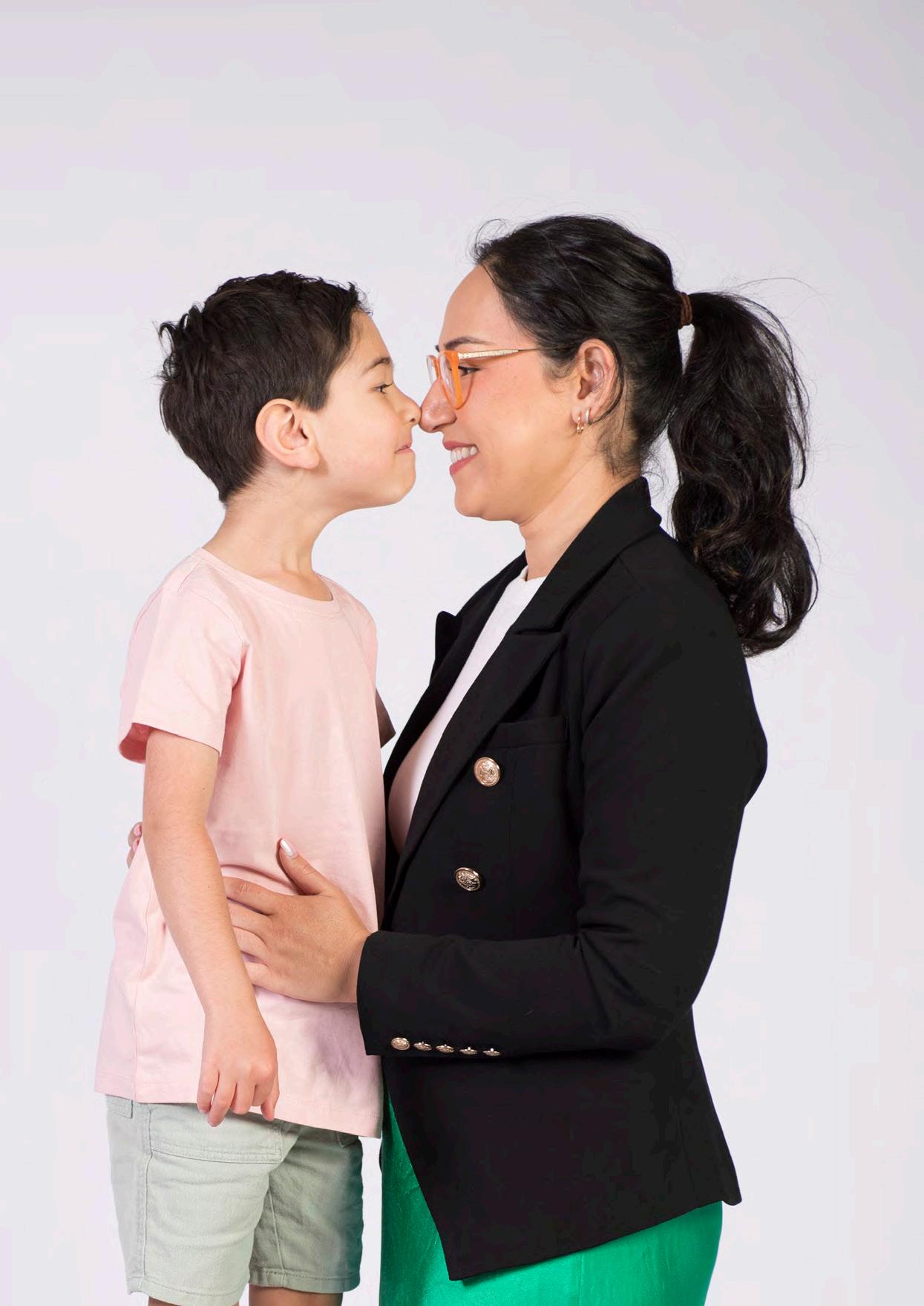


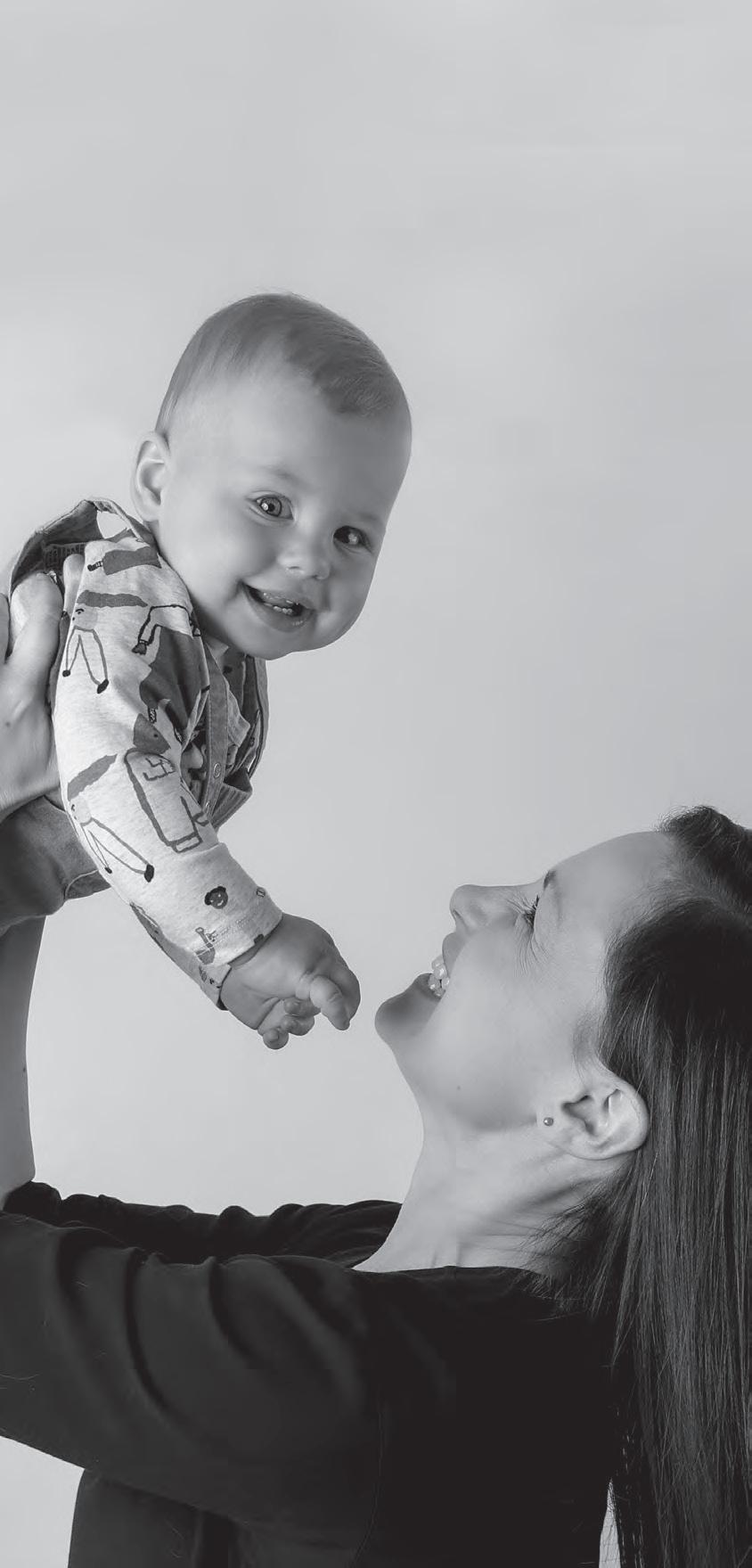







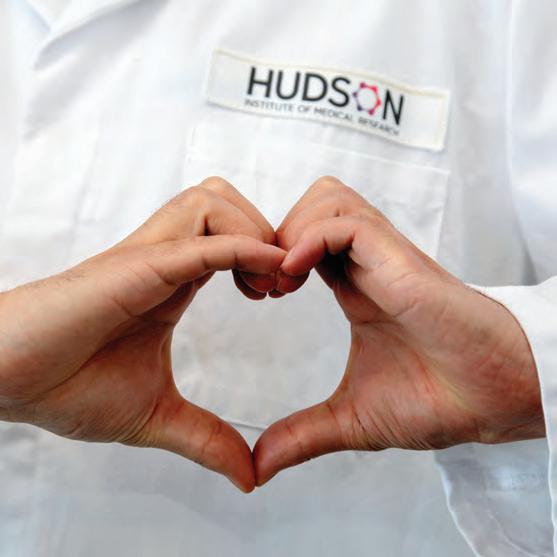

 Professor Elizabeth Hartland Director and CEO
Professor Elizabeth Hartland Director and CEO

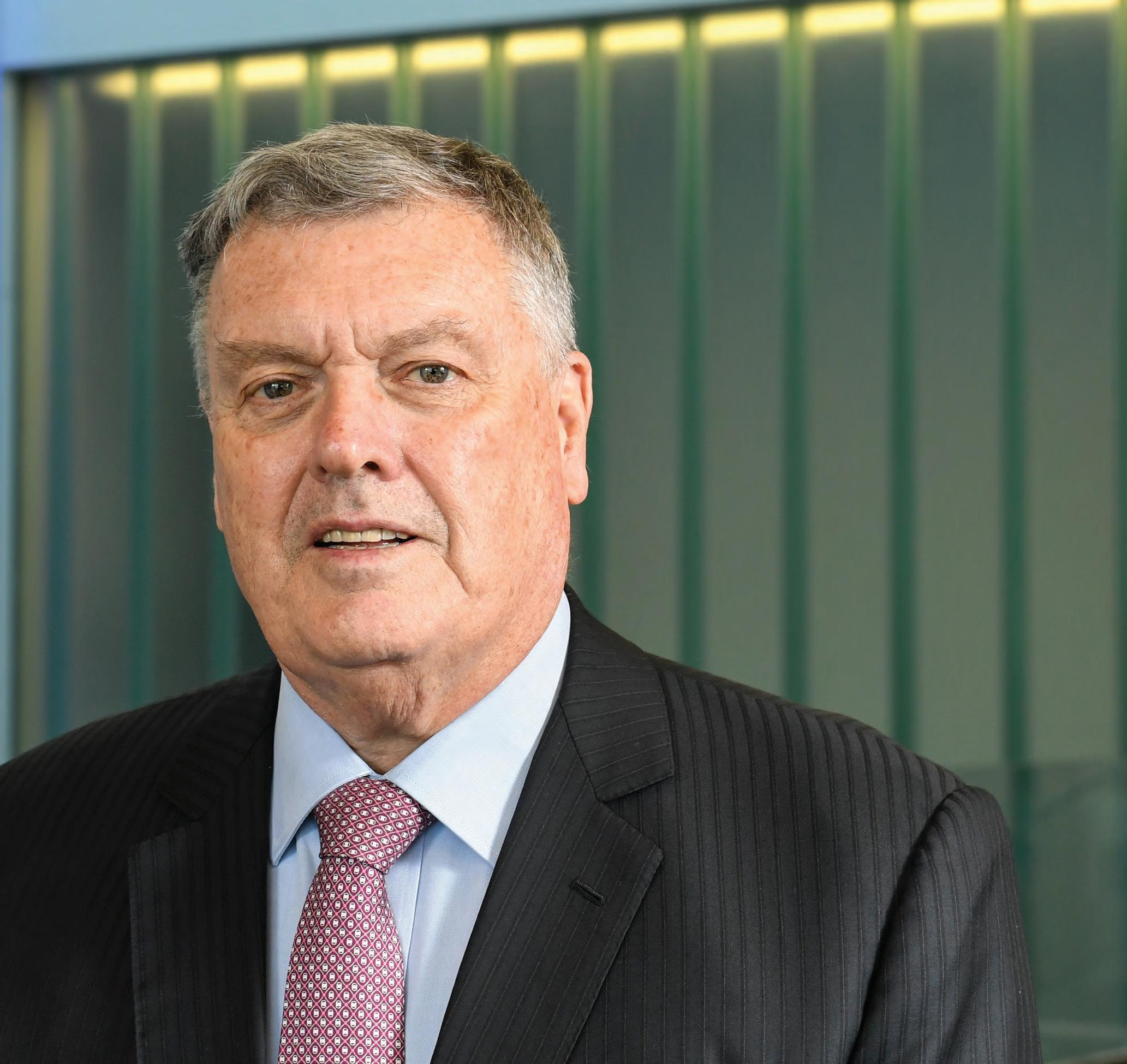

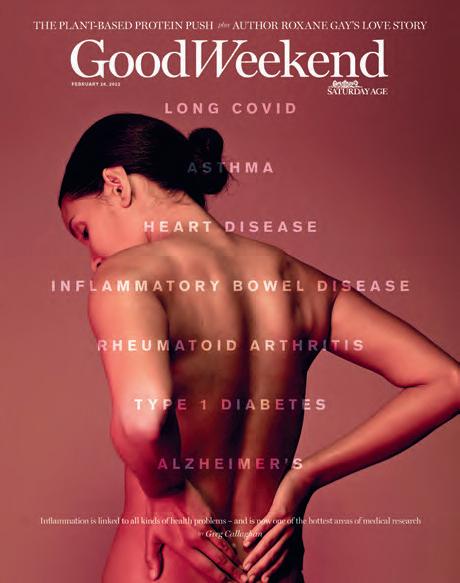
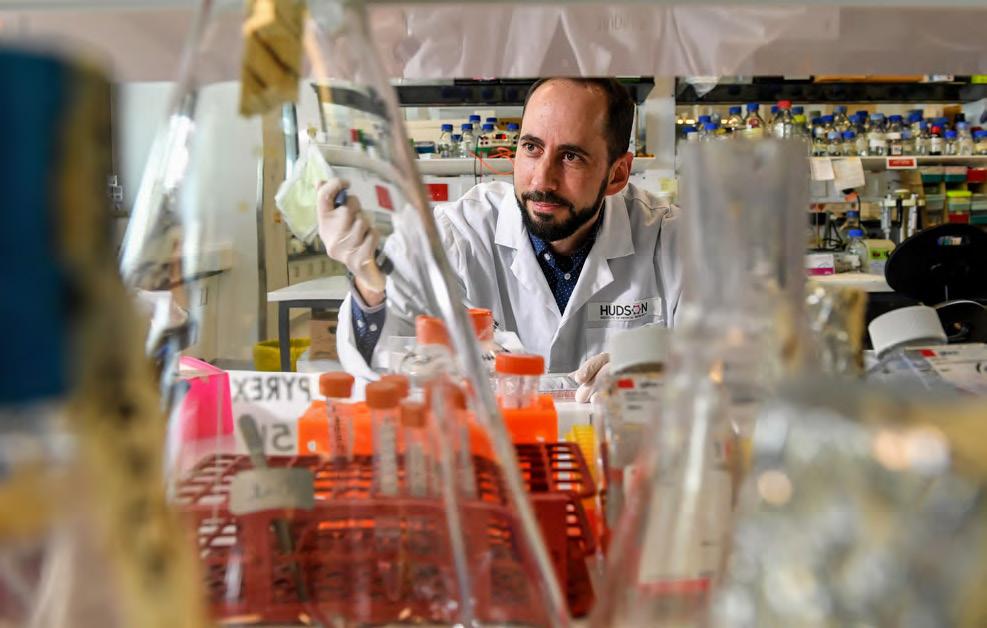
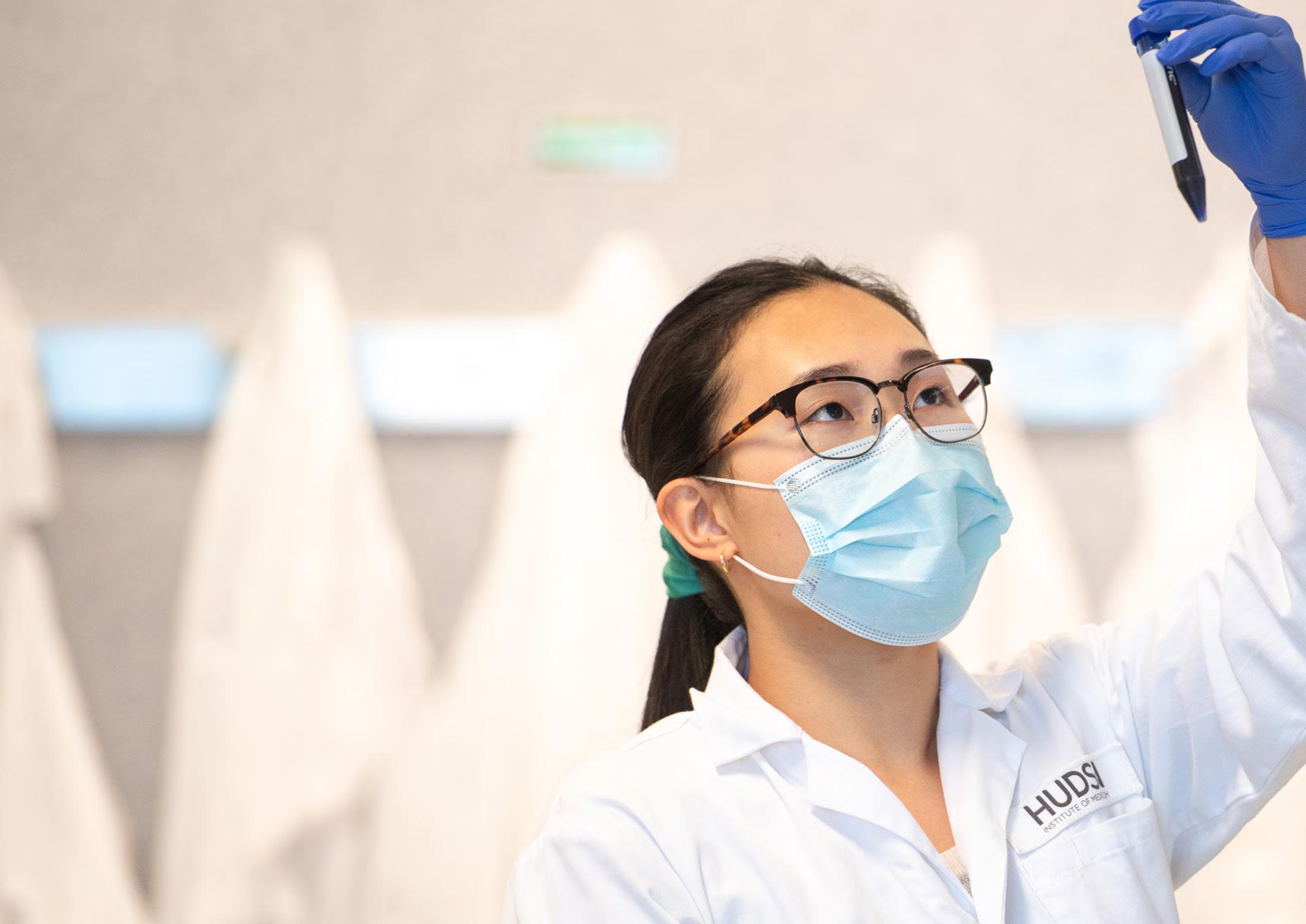

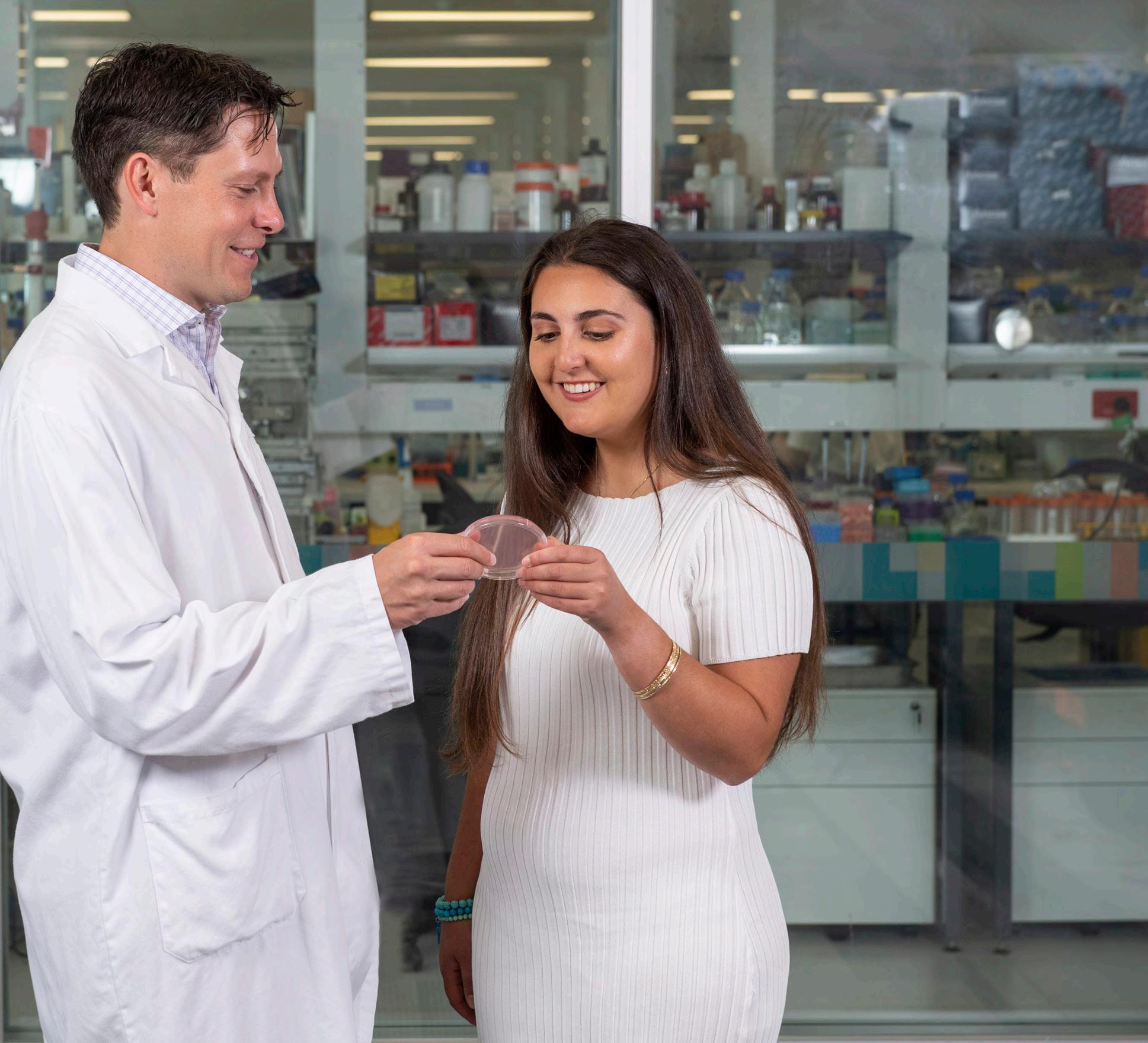


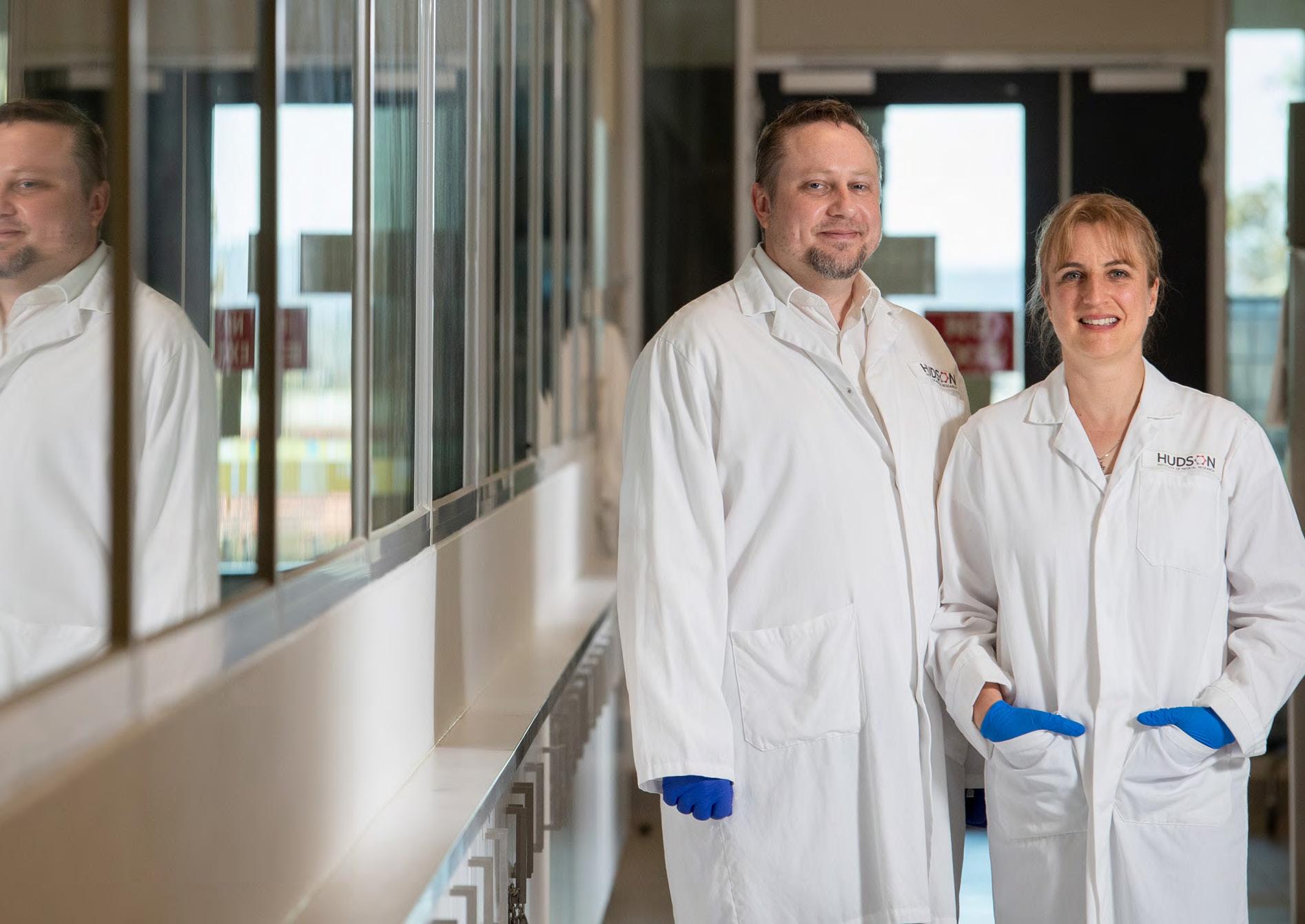
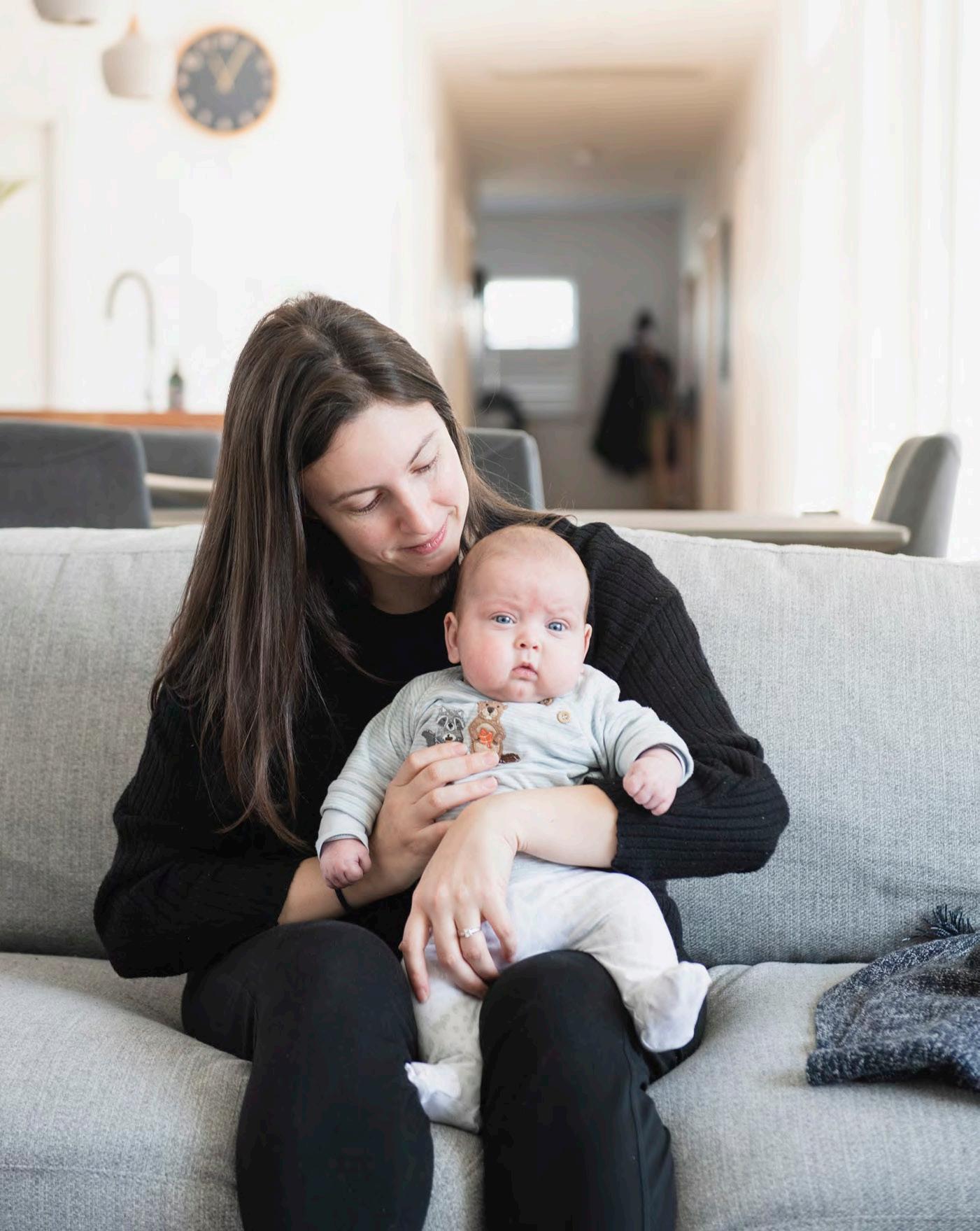
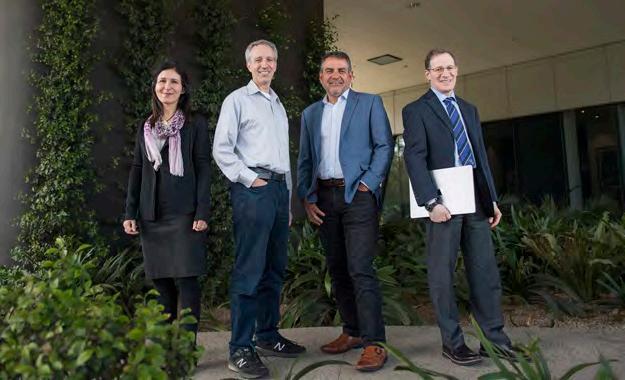
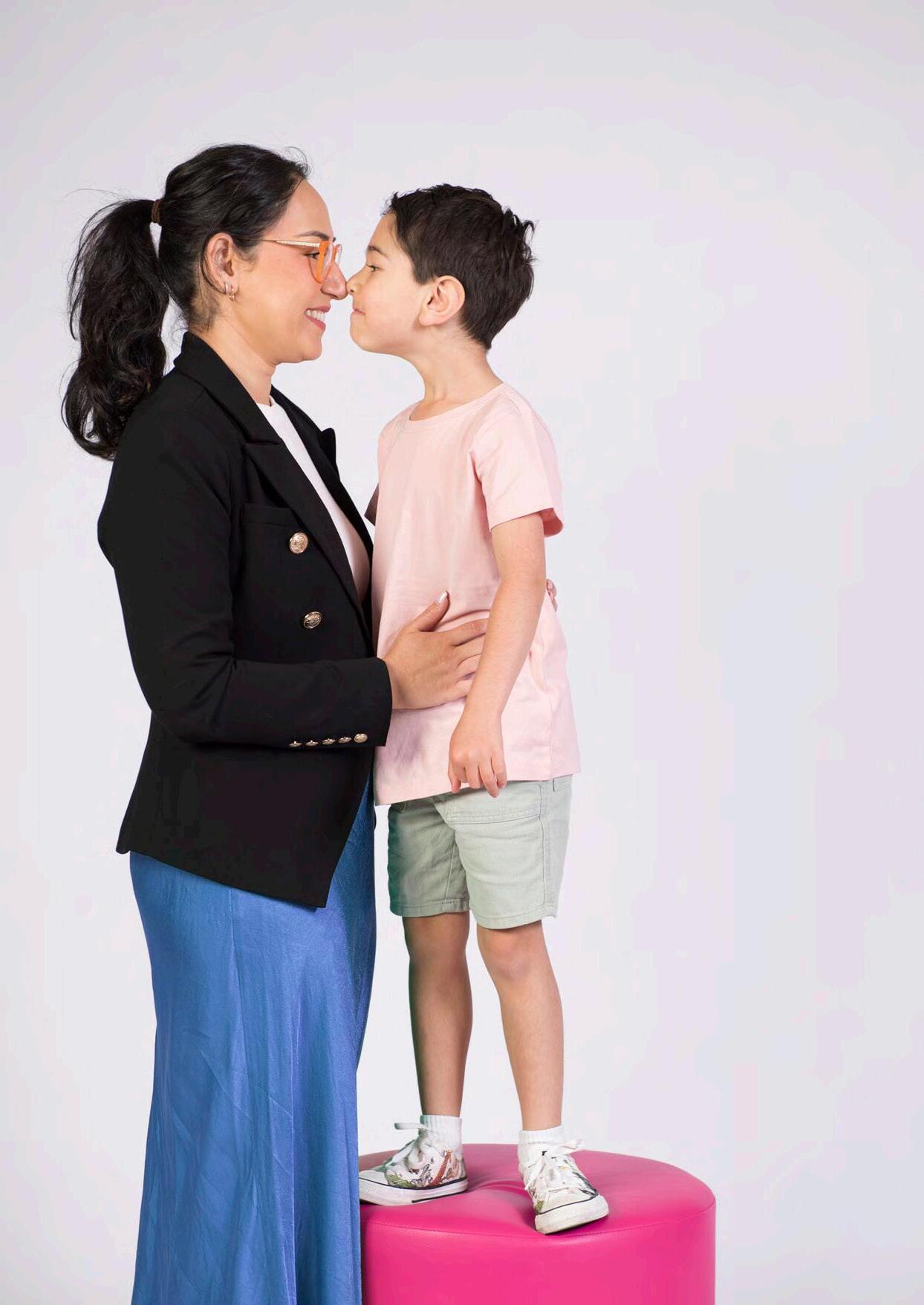
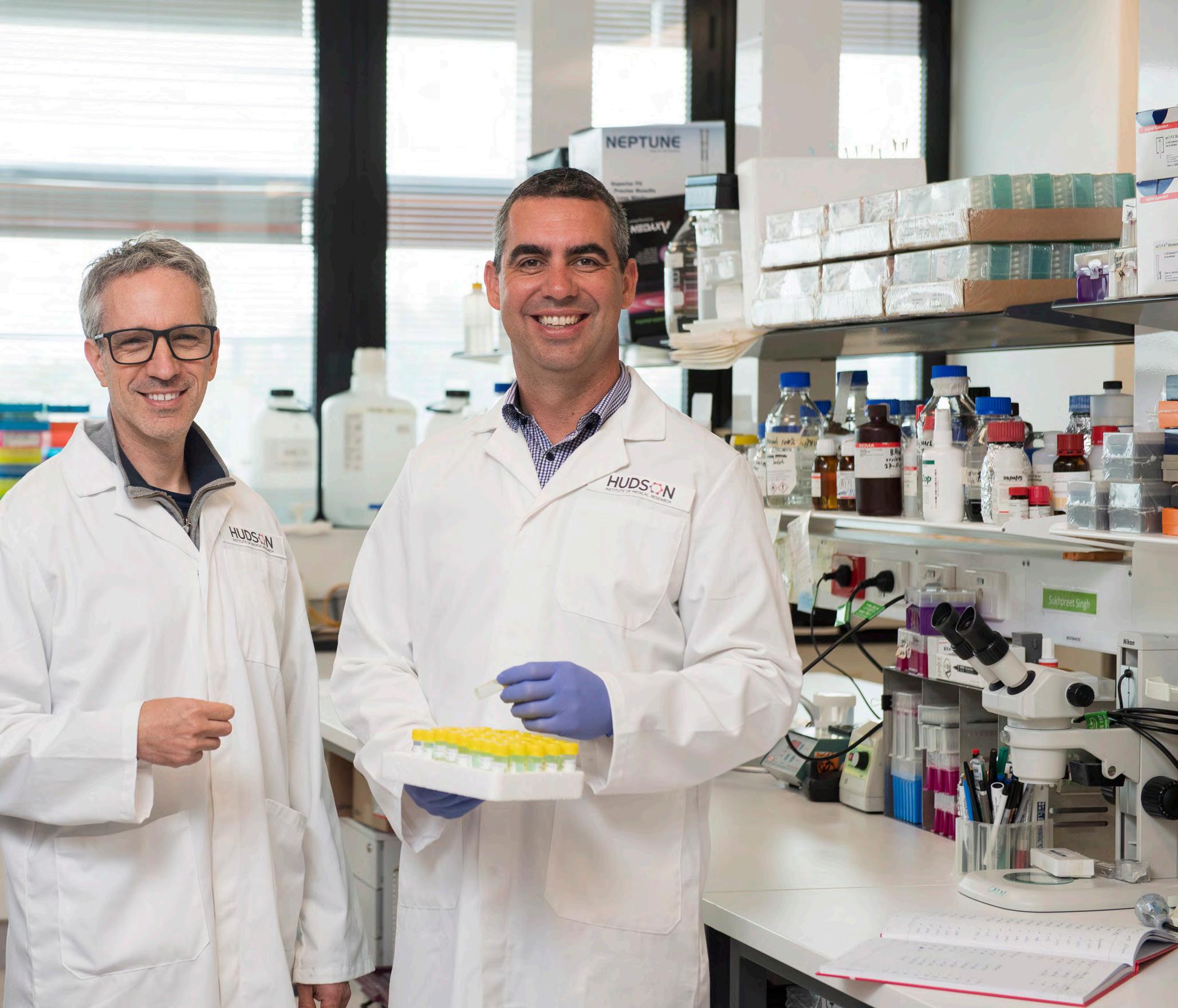
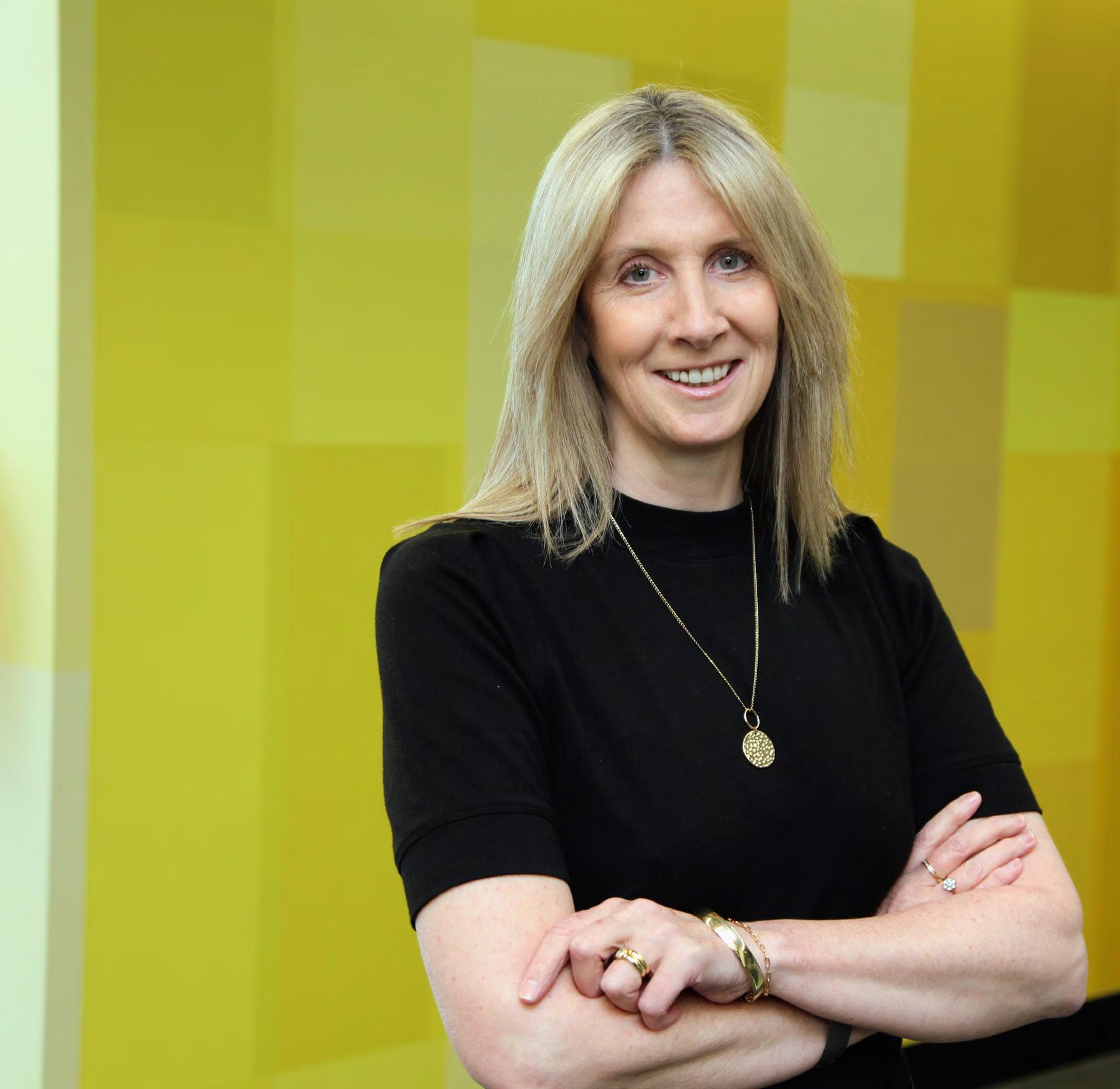

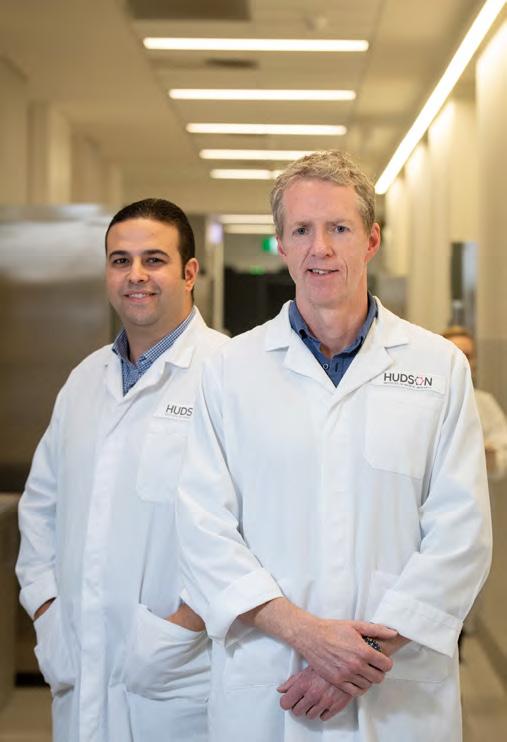
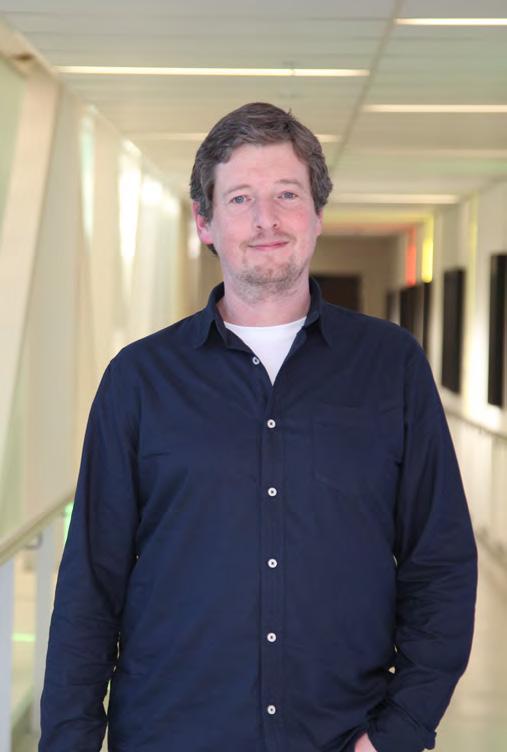

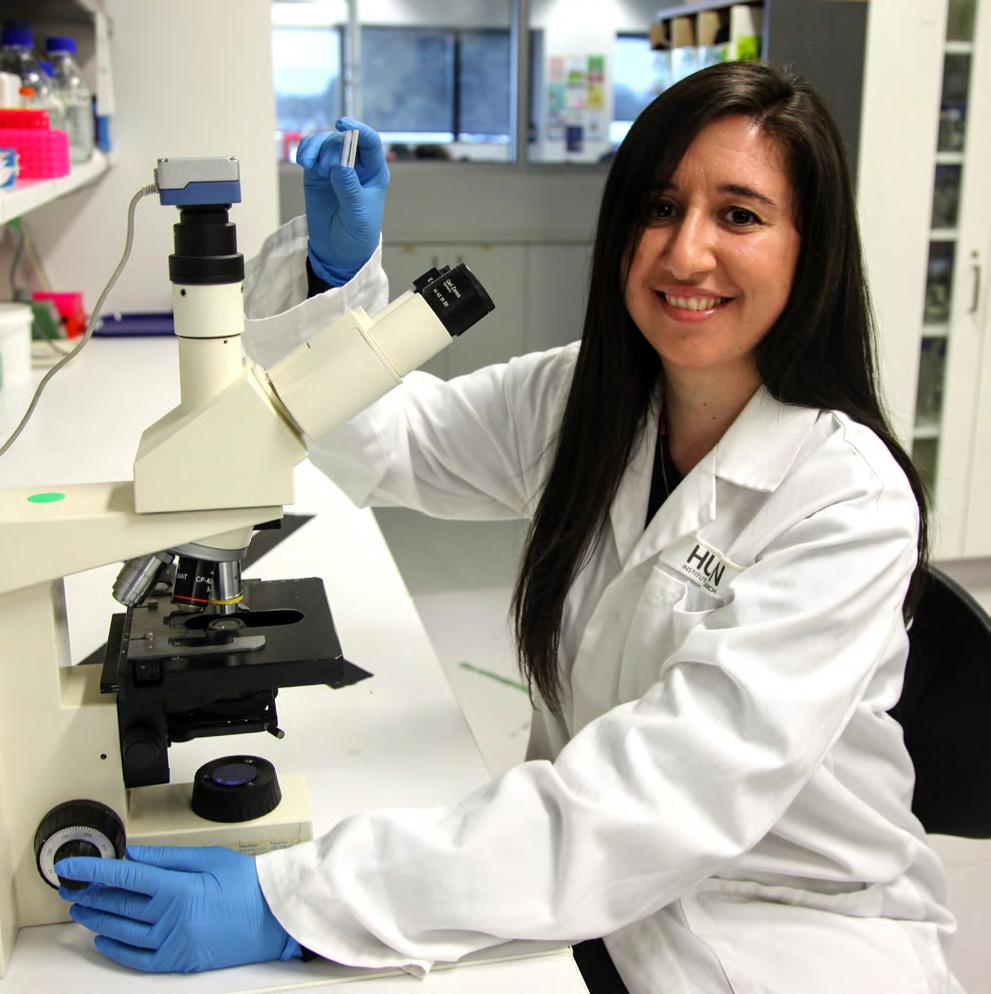

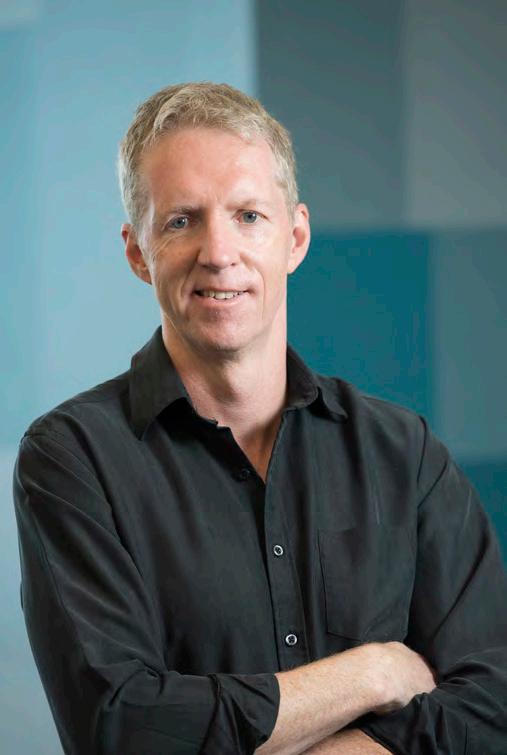

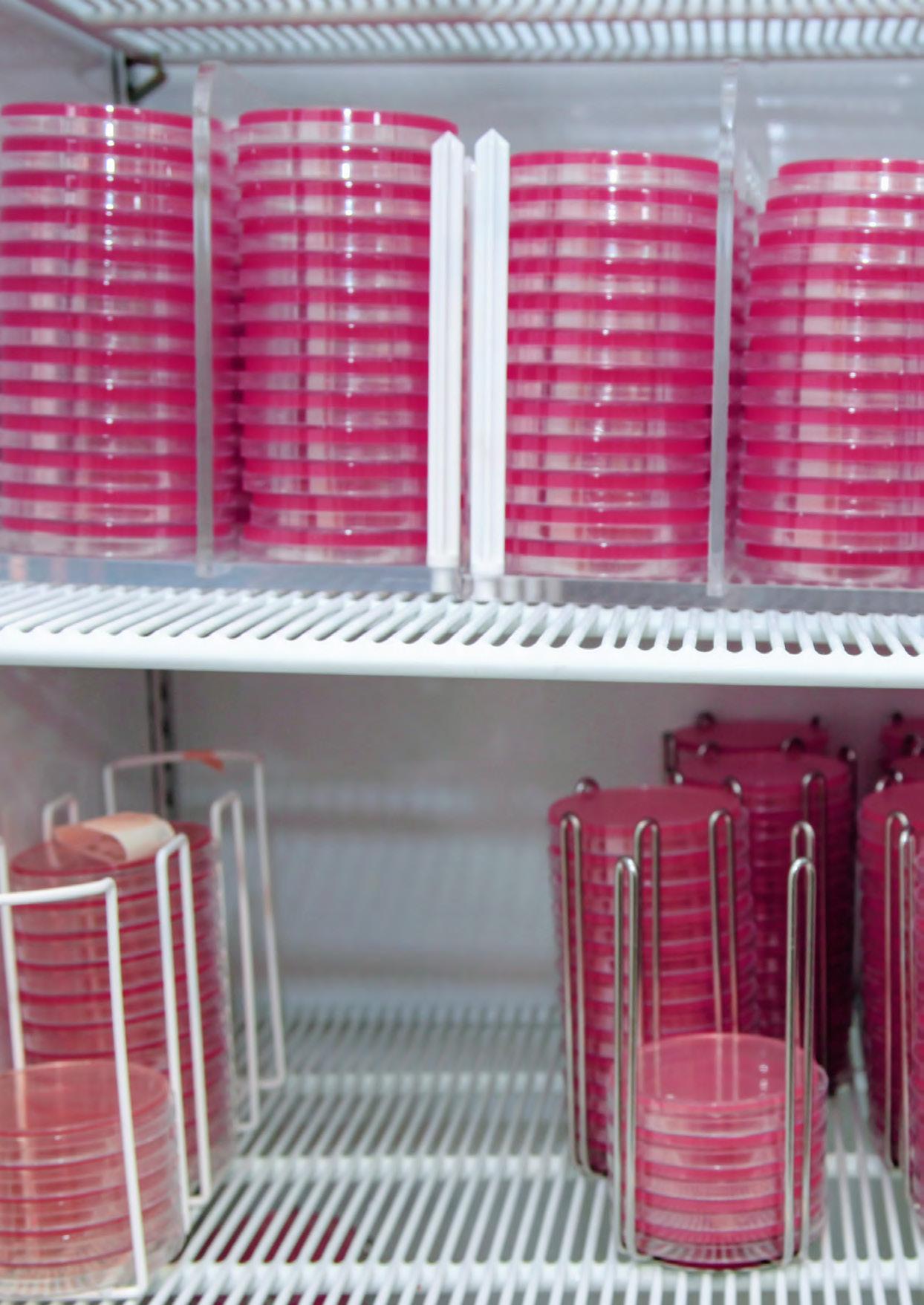

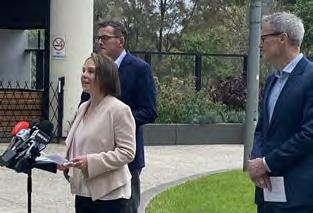
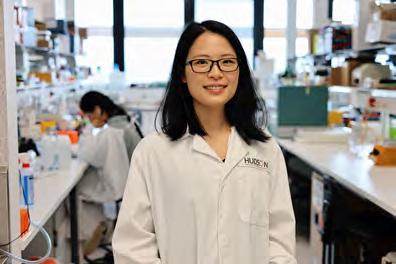

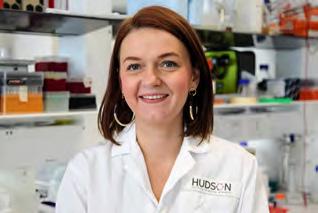

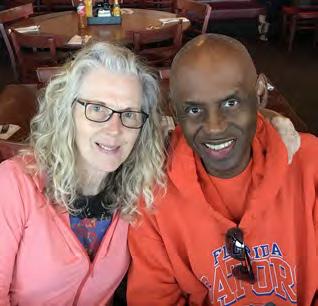

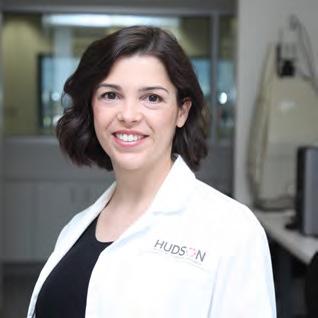


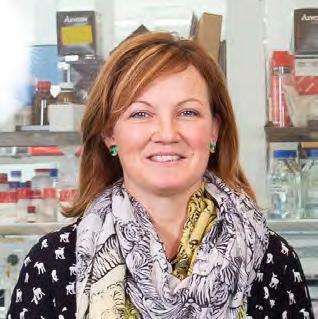

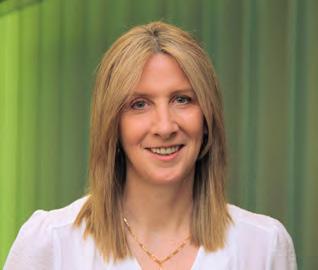
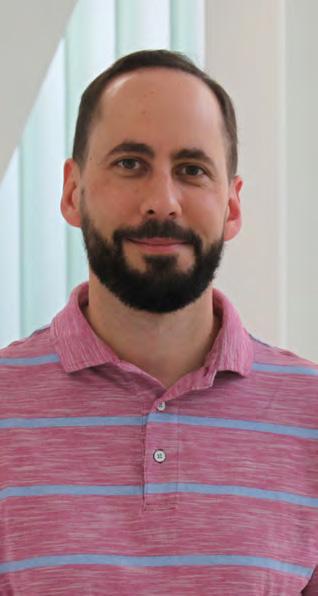
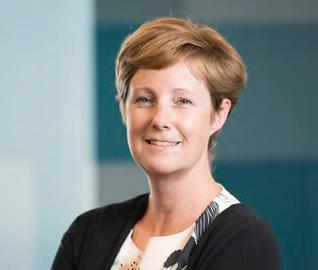





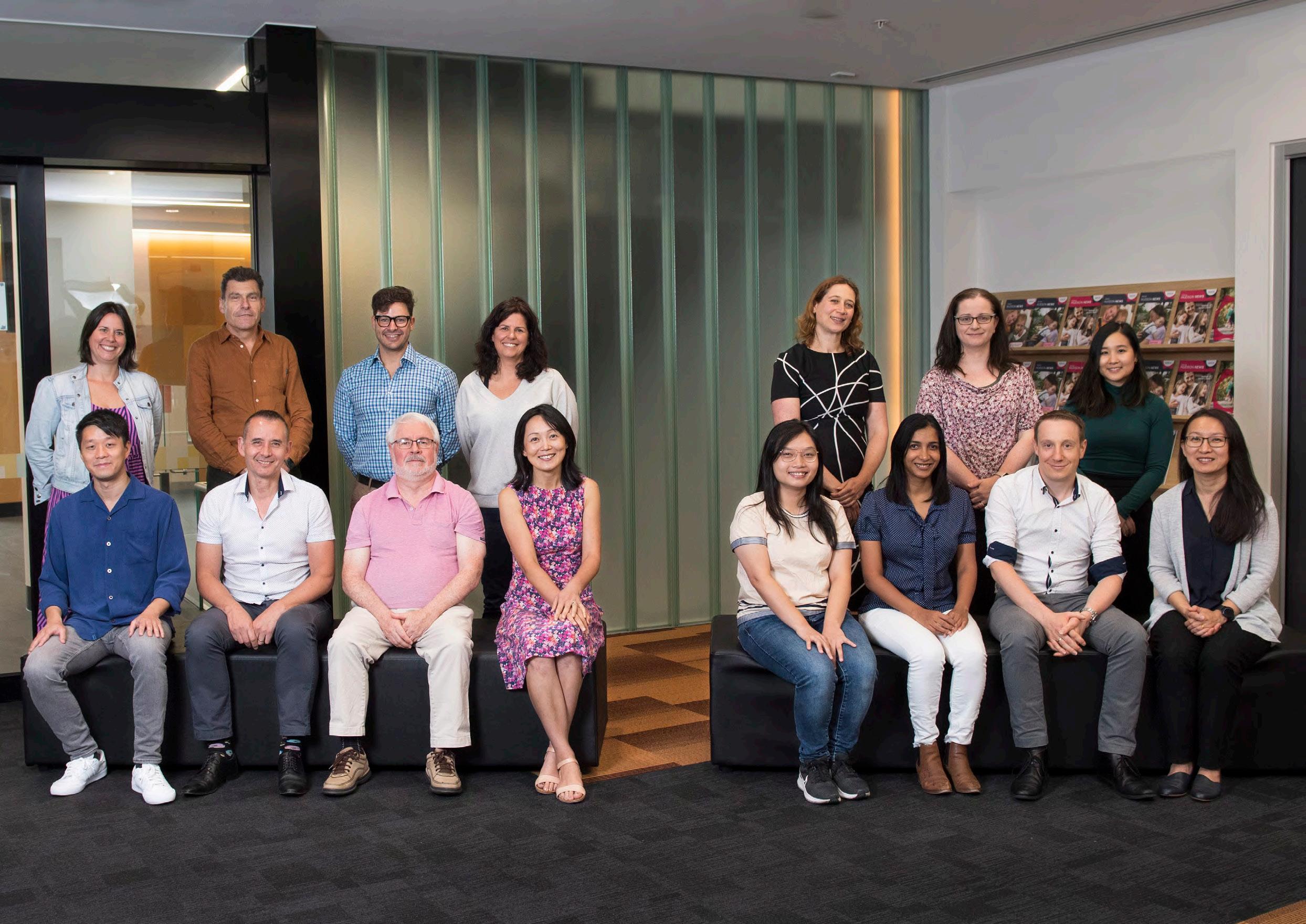
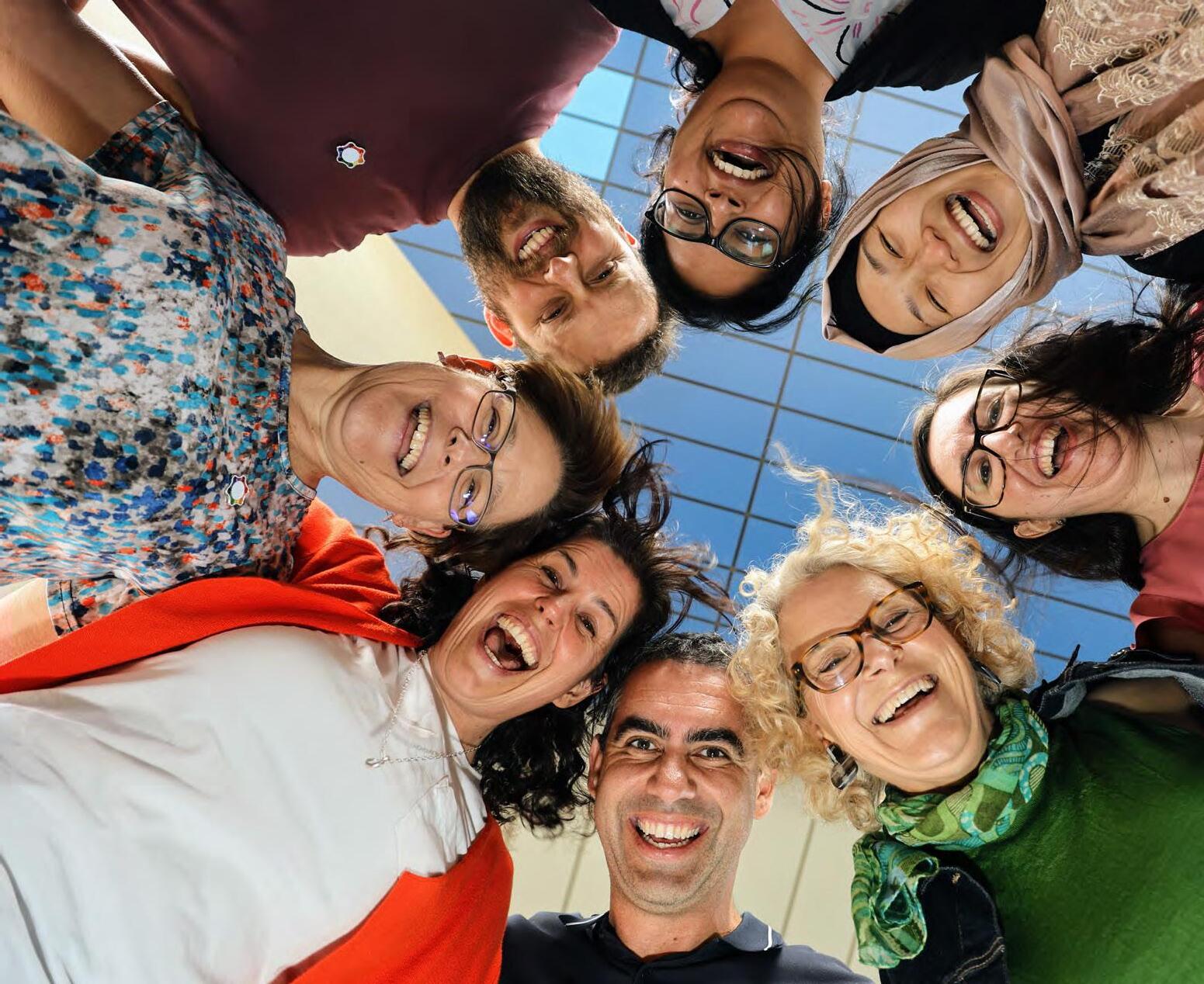
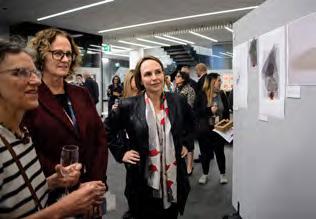

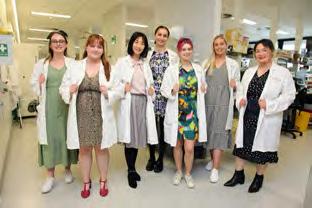




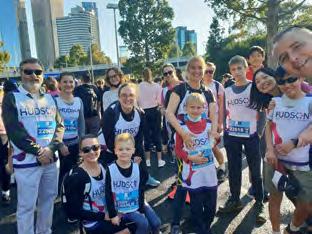
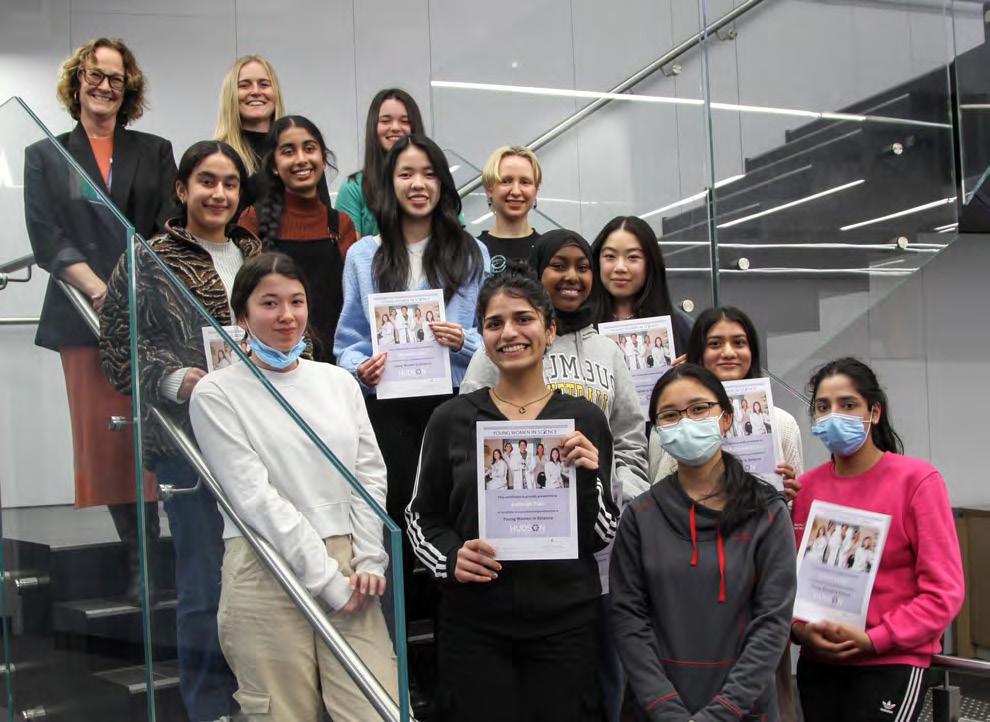
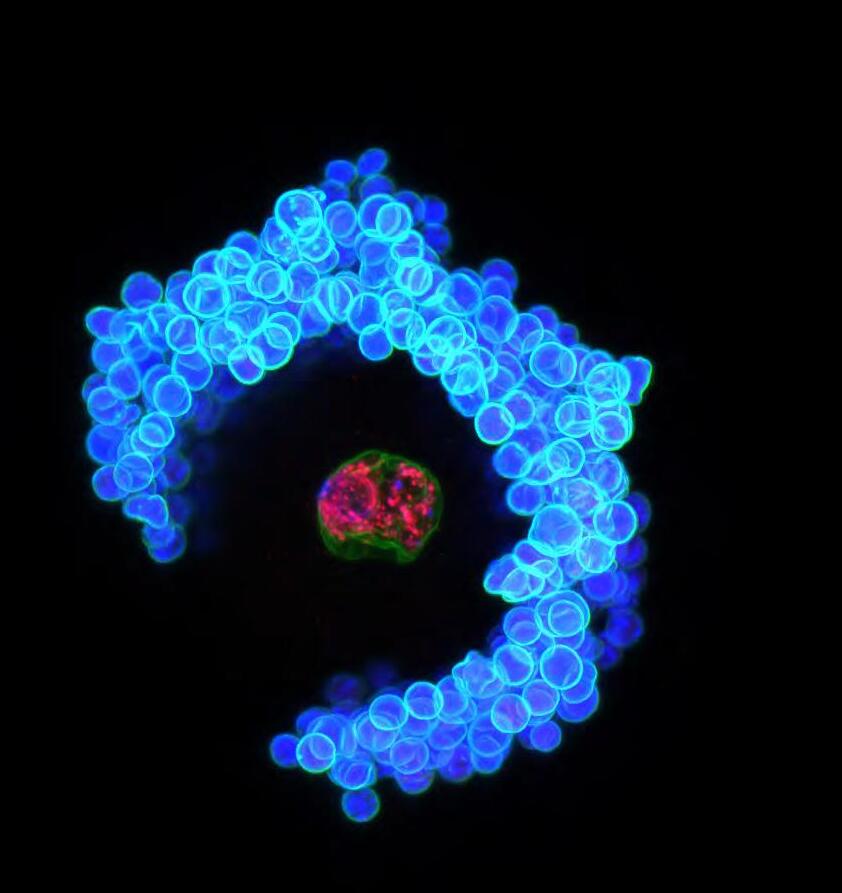


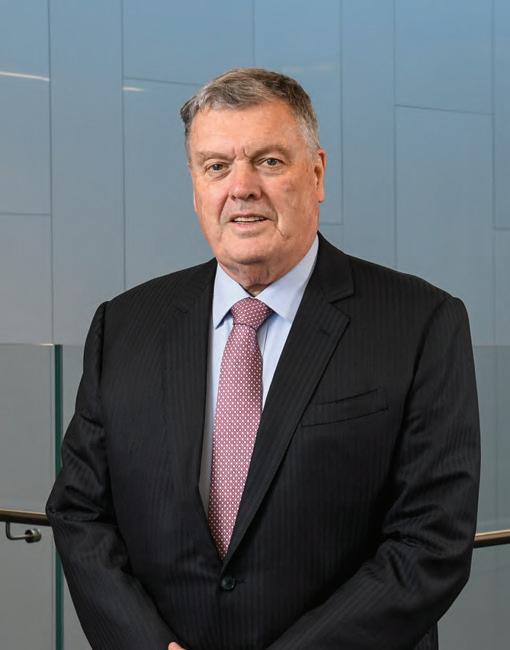
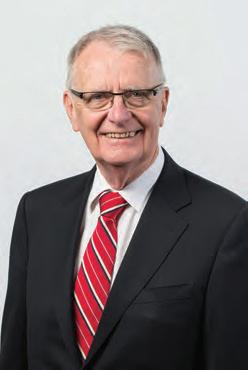
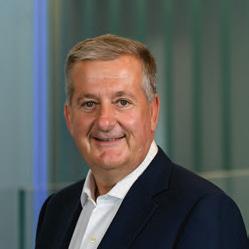


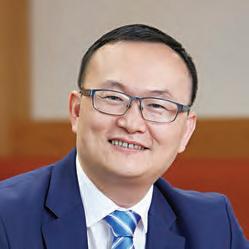 PROFESSOR CHRISTINA MITCHELL AO MBBS, PhD, FRACP, FAHMS
PROFESSOR WARWICK ANDERSON AM BSc (Hons) UNE, PhD (Adelaide), DUniv (Adelaide), FAHA (Int), FRCPA (Hon), FAAHMS, DH (Newcastle)
MR NIGEL GARRARD BEcomm, AICD, CA Resigned:
MR ANDREW LEYDEN BComm Chair, Investment Committee
MR GEORGE OU MBA, CPA
PROFESSOR CHRISTINA MITCHELL AO MBBS, PhD, FRACP, FAHMS
PROFESSOR WARWICK ANDERSON AM BSc (Hons) UNE, PhD (Adelaide), DUniv (Adelaide), FAHA (Int), FRCPA (Hon), FAAHMS, DH (Newcastle)
MR NIGEL GARRARD BEcomm, AICD, CA Resigned:
MR ANDREW LEYDEN BComm Chair, Investment Committee
MR GEORGE OU MBA, CPA

